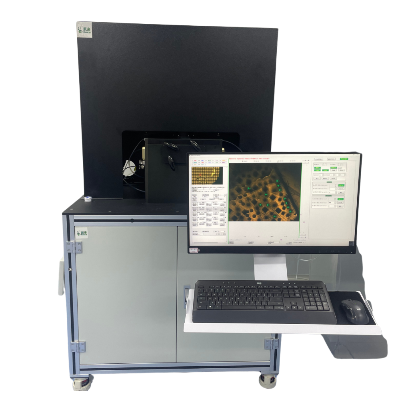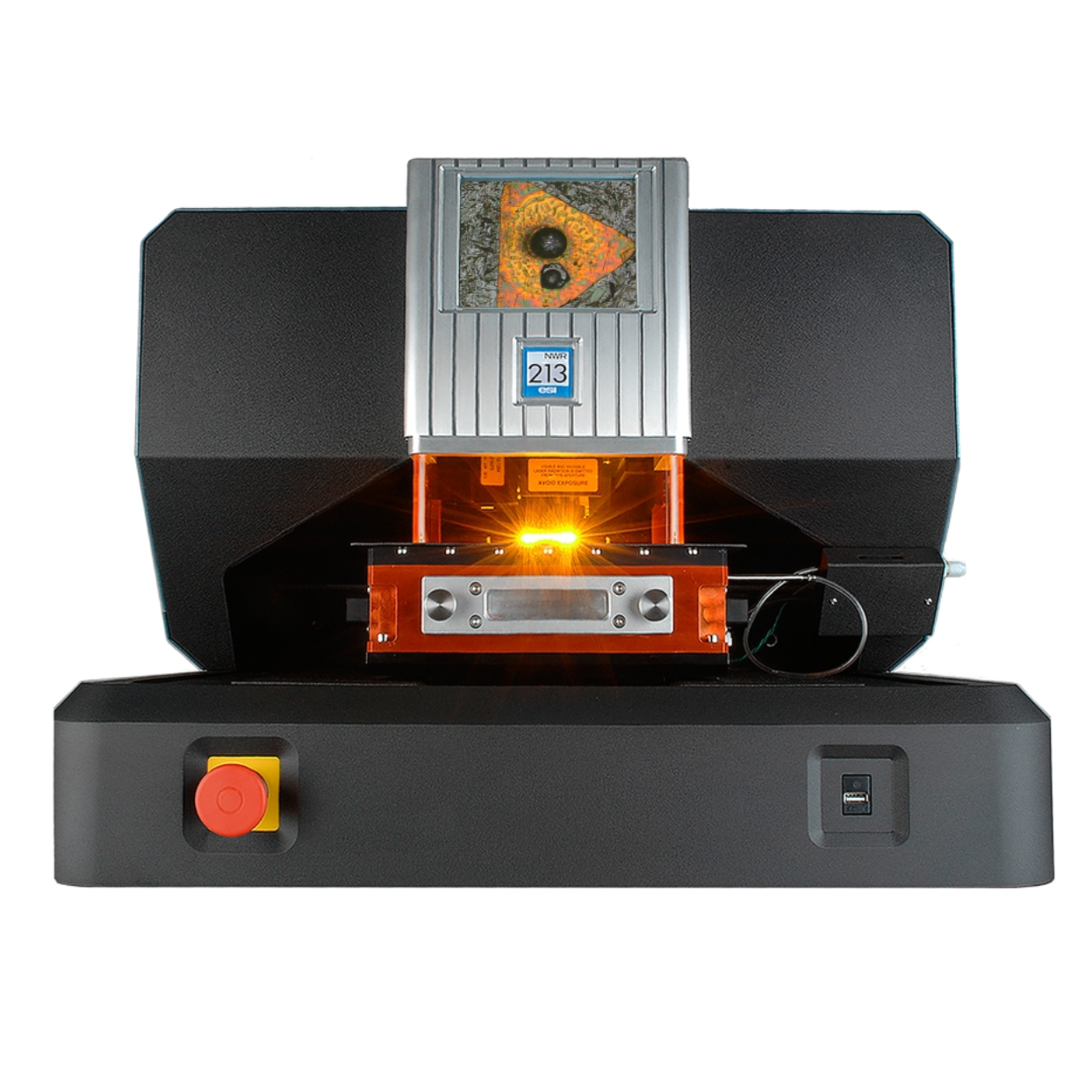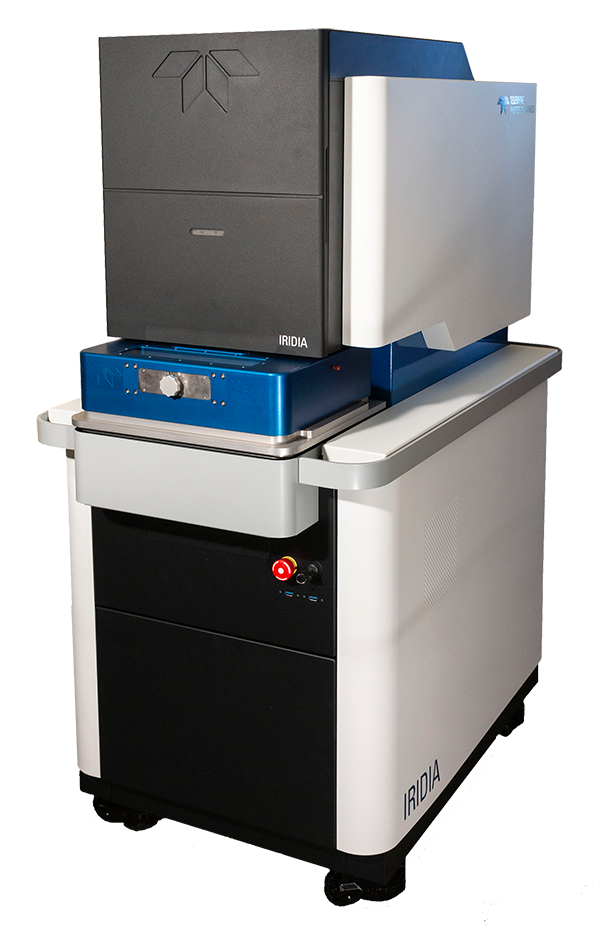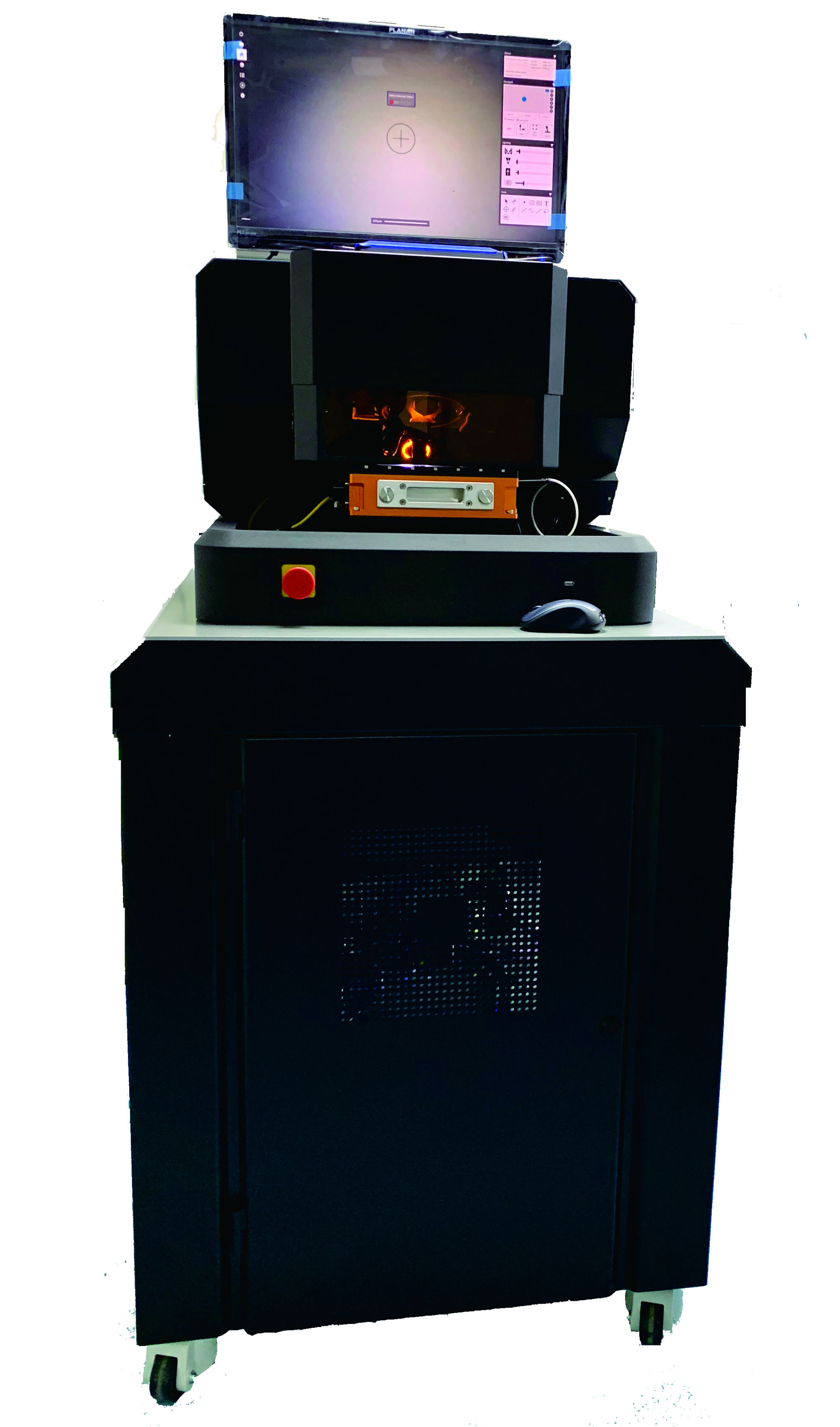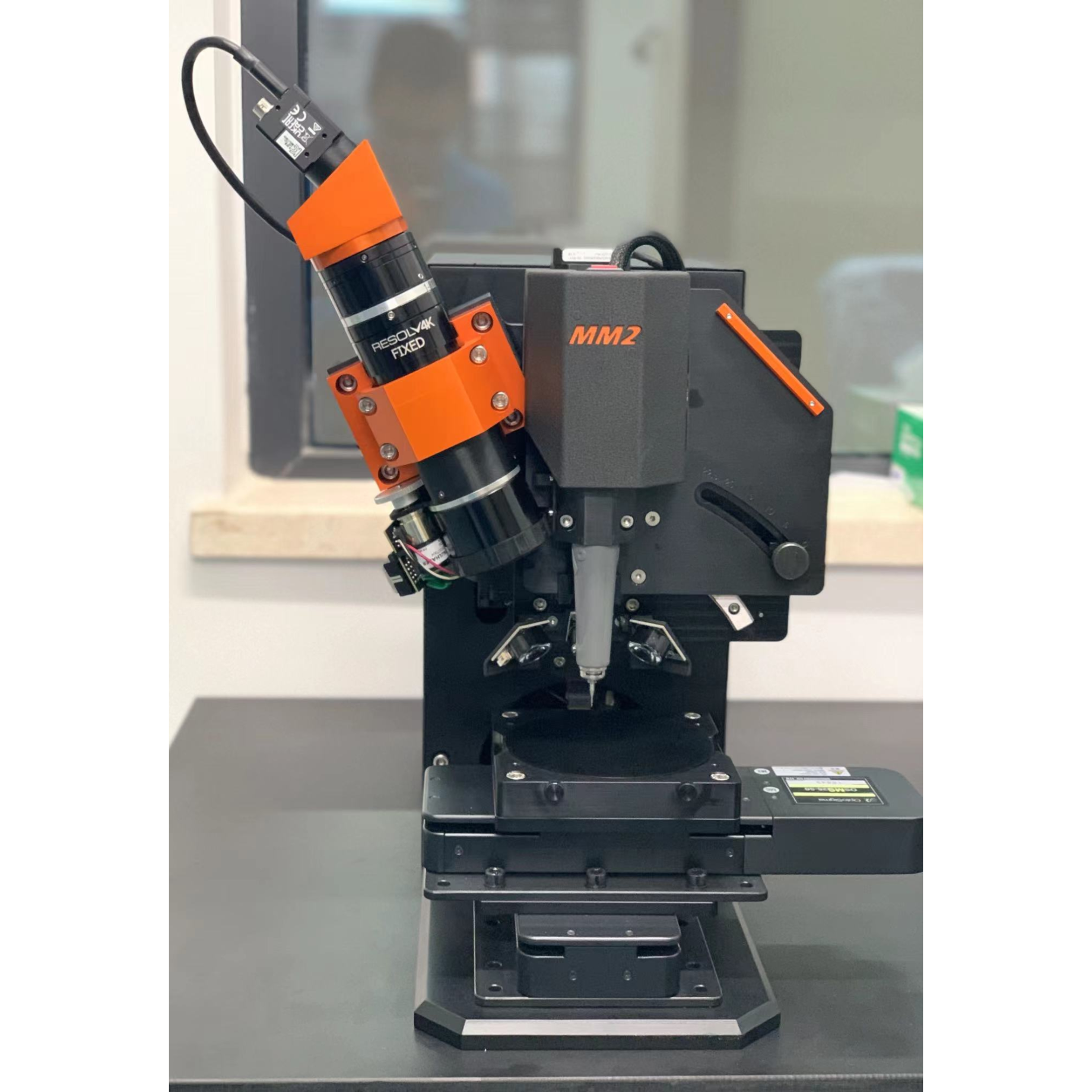方案详情
文
对苏禄造山带桃坑地区超高压榴辉岩和花岗片麻岩进行了锆石U-Pb测年、矿物Sm-Nd等时测年和O、H同位素分析。除了异构18 O损耗露头规模,矿物对氧同位素温度测量表明,在榴辉岩相820到560°C下可得耐火石榴石和锆石,且保存平衡分馏。锆石的超高压变质岩有低δ18O值-1.3至4.2‰,低于正常的地幔中锆石5.3±0.3‰。U-Pb不谐合曲线18O贫锆石原岩和变质岩年份分别为770±23Ma和214±9Ma。因此,18O贫锆石结晶自中新元古代低18O岩浆,其前驱体在活动裂隙区熔融前经历了高温大气热液蚀变。采用气相色谱-质谱在线技术测定了氢同位素组成和水浓度。结果显示所谓的无水矿物δD值为-121 - 为58‰,羟基类矿物质的值为-62‰羟基轴承矿物质,与超高压变质火成岩原岩经高温蚀变、重熔后加入大气水相一致。在所谓的无水矿物中,以分子水和结构羟基的形式检测到百万分之百的水,给深层俯冲大陆地壳含水量(除了含水矿物)估算提供了一个重要的依据。一个Gt-Wr-Pl Sm-Nd等时线年代为214±10Ma,与锆石U-Pb测年和对应的O同位素等时线的结果相吻合。因此,这两个年龄都可以解释为高压榴辉岩相在初次掘出时再结晶的时间。锆石过度生长和Nd-O同位素再平衡的流体呈现过程在这一退行期表现明显。另一方面,对应于石榴石和钾长石中O同位素之间的不平衡状态,得到了一个Gt-Kfs Sm-Nd 等时线164±11Ma,。这一时期晚于三叠纪碰撞造山运动,因此与大陆俯冲和掘出的过程没有关系,表明碰撞后阶段的流体活动受限制。因此,高变质岩中共存矿物间的O同位素平衡或不平衡状态,为矿物Sm-Nd定年的有效性提供了直接的检验。
方案详情

International Geology Review, Vol. 49,2007,p.259-286.Copyright @ 2007 by V. H. Winston & Son, Inc. All rights reserved. 260GONG ET AL. Geochronology and Stable Isotope Geochemistryof UHP Metamorphic Rocks at Taohangin the Sulu Orogen, East-Central China BING GONG, YONG-FEI ZHENG, YUAN-BAO Wu, ZI-FUZHAO, TIANSHAN GAO,JUN TANG, REN-XU CHEN, BIN FU, CAS Key Laboratory of Crust-Mantle Materials and Enironments, School of Earth and Space Science,University of Science and Technology of China, Hefei 230026, China AND XIAOMING LIU MOE Key Laboratory of Continental Dynamics, Department ofGeology, Northwest University, Xi'an 710069, China Abstract Zircon U-Pb dating, mineral Sm-Nd isochron dating, andO and H isotope analyses were carriedout for ultrahigh-pressure (UHP) eclogite and granitic gneiss from Taohang in the Sulu orogen.Besides heterogeneous 180 depletion on an outcrop scale, mineral-pair O isotope thermometry indi-cates that refractory garnet and zircon attained and preserved equilibrium fractionations at about820 to 560℃ under eclogite-facies conditions. Zircons from the UHP metamorphic rocks have low8180 values of -1.3 to 4.2%o, variably lower than 8180 values of 5.3±0.3%o for normal mantlezircons. U-Pb discordia dating of 180-depleted zircons yields a protolith age of 770±23 Ma and ametamorphic age of 214 ± 9 Ma. Therefore, the 180-depleted zircons crystallized from a mid-Neoproterozoic low-180 magma whose precursor experienced high-T meteoric-hydrothermal alter-ation prior to melting in an active rifting zone. Both H isotope composition and H,O concentrationwere measured by the TCEA-MS online technique. The results show 8D values of -121 to -58%o fornominally anhydrous minerals and -101 to -62%o for hydroxyl-bearing minerals, consistent withincorporation of meteoric water into protoliths of UHP meta-igneous rocks by high-T alteration andremelting. Hundreds to thousands of ppm H,0 were detected in the forms of both molecular waterand structural hydroxyl to be present in the nominally anhydrous minerals, providing an importantbudget of water content (besides hydrous minerals) in deeply subducted continental crust. A Gt-Wr-Pl Sm-Nd isochron age of 214 ± 10 Ma was obtained, in agreement with the zirconU-Pb age and corresponding to the state of O isotope equilibrium between the isochron minerals.Thus both ages are interpreted to represent the time of high-pressure eclogite-facies recrystallizationduring the initial exhumation. A fluid-present process for zircon overgrowth and Nd-0 isotopicreequilibration is evident for this episode of retrogression. On the other hand, a Gt-Kfs Sm-Nd iso-chron age of 164 ±11 Ma was obtained, corresponding to the state of O isotope disequilibriumbetween garnet and K-feldspar. This age postdates the Triassic collision orogeny, and thus has norelevance to the processes of both continental subduction and exhumat1iomn, suggesting limited fluidactivity in the post-collisional stage. Therefore, the state of O isotope equilibrium or disequilibriumbetween coexisting minerals in high-grade metamorphic rocks provides a direct test for the validityof the mineral Sm-Nd chronometer in either case. Introduction SINCE DISCOVERY OF coesite and micro-diamondinclusions in eclogites from the Dabie-Sulu orogenicbelt in east-central China (Okay et al., 1989; Wanget al., 1989; Xu et al., 1992), many studies haveconcentrated on the stable isotope geochemistry of ( Corresponding author; email: y fzheng@ustc.edu.cn ) ultrahigh-pressure (UHP) metamorphic rocks, withparticular interest in chemical geodynamics and thefluid regime (Zheng et al., 2003a, and referencestherein). The presence of anomalously low 8180 val-ues of -11 to -2%0 in the UHP eclogites andgneisses indicates exchange of meteoric water withtheir protoliths before subduction (Yui et al., 1995,1997; Zheng et al., 1996, 1998, 1999; Baker et al.,1997; Rumble and Yui, 1998; Fu et al., 1999). Very limited fluid mobility is demonstrated to haveoccurred during UHP metamorphism by the Triassicsubducton of continental crust to mantle depths(Zheng et al., 2003a). As argued by Zheng et al.(2003), continent-continent collision is not onlycharacterized in geodynamic processes by fast sub-duction and fast exhumation of cold slabs withshort-lived residence for UHP metamorphism atmantle depths, but also its fluid regime is attributedto internal redistribution of preexisting water thatattests to significant activity during the exhumationwith major derivation from decompression exsolu-tion of hydroxyl in nominally anhydrous minerals. Zircon U-Pb geochronology has been success-fully used to define the timing of UHP metamor-phism in the Dabie-Sulu orogenic belt (e.g., Ames etal., 1996; Hacker et al., 1998; Ayers et al., 2002; Liet al., 2004;Liu and Xu, 2004; Liu et al., 2004a,2004b; Wan et al., 2005; Zheng et al., 2005a).TheUHP metamorphic event has been dated for differ-ent types of UHP rocks at different outcrops, rang-ing from U-Pb ages of 240 ± 1 Ma (Hacker et al.,1998, 2000) to the mineral Sm-Nd isochron ages of236 ± 4 Ma (Li et al. 2004) to 226±3 (Li et al.,2000). A more tight constraint is placed by SHRIMPU-Pb ages of 234±4 to 227±2 Ma for coesite-bear-ing domains of zircon from UHP gneisses (Liu andXu et al., 2004; Liu et al., 2004a,2004b). These agedifferences may indicate that the termination timingof peak UHP metamorphism may be different for thedifferent slices of deeply subducted slab. Neverthe-less, overall period of UHP metamorphism is con-strained at 240 to 225 Ma (Li et al., 2004; Wan et al.,2005), with a timescale of ~ 245-240 Ma to 210-205 Ma for both subduction and exhumation in theorogenic HP-UHP-HP regimes. Furthermore, U-Pbdating for 180-depleted zircons from different meta-morphic grades of metabasite and metagranite in theDabie-Sulu orogenic belt yields Neoproterozoic agesof 758 ± 15 Ma for UHP meta-igneous protoliths(Zheng et al., 2004). A combined study of zircon U-Pb dating and Hf-O isotope analyses demonstratesnew addition of depleted mantle material to conti-nental crust by rift magmatism in the northernmargin of the South China Block, with coeval crust-mantle interaction in the mid-Neoproterozoictectonic rifting zone (Zheng et al., 2006). Thus thelow 8180 zircons are the product of high-T meteoric-hydrothermal alteration or crystallization from low8180 magmas whose source experienced meteoric-hydrothermal alteration before remelting in an active rifting zone (Rumble et al., 2002; Zheng etal.,2004). In Sm-Nd and Rb-Sr isotopic geochronology ofmetamorphic rocks, on the other hand, an importantquestion is whether isotopic systems of mineralisochrons achieved isotopic equilibrium during agiven metamorphic event and preserved the equilib-rium afterward. Because rates of Sm-Nd. Sr.and Odiffusion in metamorphic minerals are comparablein many cases, the state of O isotope equilibriumbetween the minerals can provide a test for thevalidity of mineral Sm-Nd and Rb-Sr isochrons(Zheng et al., 2002, 2003b,2003c; Xie et al., 2004).This paper presents a combined study of zircon U-Pb and mineral Sm-Nd ages, and O and H isotopesin UHP eclogite and granitic gneiss from Taohang inthe Sulu orogen. The results not only place con-straints on genesis of the low 8180 zircons and originof the retrograde fluid, but also explore the validityof O isotope constraints on the Sm-Nd chronometerunder different metamorphic conditions. Geological Setting and Samples UHP metamorphic rocks in the Dabie-Suluorogenic belt record Triassic continental collisionbetween the North China Block and the South ChinaBlock (e.g., Cong, 1996; Liou and Zhang, 1996;Zheng et al., 2003a). According to field occurrenceand country-rock association, three types of eclogitehave generally been categoried in the Dabie-Suluorogenic belt: (1) G-type, gneiss-hosted enclaves orlayers; (2) M-type, interlayers with-or enclaveswithin-marble or metasilicates of sedimentary pro-tolith (including jadeite quartzite); and (3) P-type,either members of layered mafic-ultramafic intru-sions or simply in association with ultramafic rocks(peridotite or pyroxenite). Four metamorphic stages have been recognizedfor high-grade units in the Dabie-Sulu orogenic belt(Ernst and Liou,1999;Zheng et al., 2003a; Li et al.,2004): (1) peak UHP coesite/diamond eclogite-facies, recorded by the occurrence of coesite anddiamond, with metamorphic temperatures of about800 to 700°℃ at >2.8 GPa; (2) high-pressure (HP)quartz eclogite-facies recrystallization, representedby the coexistence of garnet and omphacite withquartz instead of coesite,with metamorphic condi-tions of about 750 to 600°C and 2.4 to 1.2 GPa; (3)HP granulite-facies overprinting, represented by theoccurrence of orthopyroxene or plagioclase, withmetamorphic conditions of about 850 to 750°C and 2.0 to 1.0 GPa; and (4) amphibolite-facies retrogres-sion, indicated by the occurrence of varioussymplectites such as amphibole + sodic plagioclaseand the disappearance of omphacite from eclogite,with P-T conditions of about 600 to 450°C and 1.0 to0.6 GPa. The zones of different metamorphic gradesheterogeneously crop out along the orogenic belt,which is generally bounded by blueschist-facieszones in the south but greenschist-facies zones inthe north (Zheng et al., 2005b). HP quartz eclogite-facies rocks do not exist as an independent unit, butoccur as a result of retrograde HP recrystallizationthat overprinted the UHP eclogite-facies rocksd7uring the initial exhumation (Ernst and Liou, 1999;Zheng et al., 2003a). HP granulite-facies rocks dooccur as independent units where amphibolite-facies retrogression is absent (Cong, 1996; Zheng etal.,2001). This study deals with UHP eclogite and graniticgneiss from Taohang in the northwestern margin ofthe Sulu orogen (Fig.1B). Taohang is a small villagethat is located about 5 km south of the Wulian-Yantai fault (Fig. 1A). The metamorphic unit con-sists mainly of garnet-bearing kyanite-phengitequartzite, garnet-biotite gneiss, amphibole-bearingcls,ooagneiss, garnet pyroxenite, and diopside tremolite-bearing marble. Coesite pseudomorphs are presentin zoisite from the eclogite (Yao et al.,2000). Also,coesite and omphacite inclusions as minute inclu-sions occur in zircon from a granitic orthogneiss atthis locality (Ye et al., 2000). These demonstratethat both mafic and felsic metamorphic rocks expe-rienced the UHP eclogite-facies metamorphism. Atransition from eclogite-facies to granulite-faciesparagenesis (0mp + Pl + Qz + Gt) occurs in thecoesite-bearing eclogite (Yao et al., 2000). Thistransition postdated the peak UHP eclogite-faciesmetamorphism but predated amphibolite-faciesoverprinting. Such a paragenesis reequilibrated at1.7 GPa and 820℃ (Yao et al., 2000), suggestingthat the granulite-facies metamorphism had acti-vated the retrograde recrystallization at a deepcrustal level. On the other hand, amphibolite-faciesretrogression was identified by Ye et al. (2000) frompetrology of the granitic gneiss. It appears thatheterogeneous overprinting occurred in the Taohangeclogite and granitic gneiss at either high or moder-ate temperatures. The eclogite and granitic gneiss samples used inthis study were collected in the western gulley inTaohang mountain (Fig. 1A). The eclogite consists ofgarnet + omphacite (Jd4 Dio)± quartz ± zoisite ± muscovite ± zircon±rutile. The granitic gneiss con-sists of quartz + plagioclase (An()+ K-feldspar+garnet ± muscovite ± epidote ± biotite ± titanite ±zircon ± magnetite. Mineral abbreviations used inthis paper are listed in Table 1. Both eclogite and granitic gneiss at Taohangwere dated by the SHRIMP zircon U-Pb method(Zheng et al.,2004). The results from the eclogitegave two SHRIMP 206Pb/238U spot-ages of 777 ±9Ma for igneous cores, with Th/U ratios of 0.74 to0.28 for the eclogite. Although a Triassic age was notacquired from the SHRIMP data, significant Pb lossdue to metamorphism is evident from the discordantdistribution of U-Pbdata below the concordia curvetoward the Triassic age. For the granitic gneiss, theSHRIMP data only yielded a 206Pb/238U spot-age of771±9 Ma with a Th/U ratio of 0.81, and a Triassic206Pb/238U spot-age of 227 ± 3 Ma with a low Th/Uratio of 0.18. It appears that the Taohang eclogiteand granitic gneiss represent Middle Neoproterozoicprotoliths with mafic and felsic compositions,respectively. They experienced Triassic UHP meta-morphism during collision between the South ChinaBlock and the North China Block. Analytical Methods Minerals were separated for isotopic analyses.After crushing, a shaking bed was used to separateheavy minerals, followed by magnetic separationusing a magnetic separator, and then purification byhand picking under the binocular microscope. Allmineral separates used for O and H isotope analyseswere of 40 to 60 um grain size. Oxygen isotope analysis was accomplished formineral separates by the laser fluorination tech-niques at the University of Science and Technologyof China in Hefei. A 25 W CO, laser MIR-10 wasused: its emission wavelength is 10.6 um, which liesin the infrared domain, and can thus be wellabsorbed by O-bearing compounds; its power can beadjusted in the range of 0 to 100%, which is veryimportant during sample analysis; the diameter ofthe laser beam can be adjusted from 100 to 1820um. Minerals weighing about 1.5 to 2.0 mg werereacted with BrF, under vacuum. Obtained 0, wasdirectly transferred to a mass spectrometer for O iso-tope analysis.180/160 ratios were measured in aDelta+ mass spectrometer and reported in the 8180notation relative to the VSMOW standard. Anumber of replicate analyses give a reproducibilityof better than ±0.1%o (Zheng et al., 2002). Three FIG.1. Sketch map of geology at Taohang within the framework of the Sulu orogen.Sample numbers denote sample localities. A. Sketch of geological map at Taohang. B. Indexmap of the Sulu orogen showing the position of Taohang. TABLE 1. Oxygen Isotope Composition and Estimated Temperatures of UHP Metamorphic Rocks from Taohang, Sulu Orogen TABLE l. Continued TABLE 1. Continued Sample number Minerals 8180,% Mineral pairs A180,% T,℃ Granitic gneiss OOSL10 Qz 6.02 Kfs 3.71 Qz-Kfs 2.31 325 Pl 3.50 Qz-Pl 2.52 380 Gt 2.54 Qz-Gt 3.48 685 Tn 1.64 Qz-Tt 4.38 495 Bi 0.95 Qz-Bi 5.07 450 Ep 2.60 Qz-Ep 3.42 535 Mt -3.23 Qz-Mt 9.25 455 Eclogite 0OTH06 Qz 5.43 Mus 2.40 Qz-Mus 3.03 515 0mp 2.17 Qz-Omp 3.26 495 Gt 1.10 Mus-Gt 1.30 700 Rt -2.27 Mus-Rt 4.67 380 OOTH08 Mus 2.98 Gt 1.66 Mus-Gt 1.32 650 Zr 1.78 Mus-Zr 1.20 700 Rt -1.47 Mus-Rt 4.45 400 00TH15 Mus 1.11 0mp 0.85 Gt -0.05 Mus-Gt 1.16 750 Rt -3.11 Mus-Rt 4.22 450 Mineral abbreviation: Qz = quartz; Kfs=K-feldspar; Pl (An 30)=plagioclase; Mus = muscovite; Tn =titanite; Ep=epi-dote; Omp (Jd40Di6o)=omphacite; Gt=garnet; Zr= zircon; Rt= rutile; Mt = magnetite.’T was calculated by using theoretical calculations of Zheng (1991, 1993a, 1993b), and“Dis" denotes disequilibrium frac-tionation. 3Not pure. international standards and two national standardsof China were used during the laser fluorinationanalyses: 8180=5.8% for UWG-2 garnet (Valley etal., 1995);8180=5.2%o for SCO-1 olivine (Eiler etal山., 1996); 8180= 10.0%0 for 91500 zircon (Zheng etal山., 2004); 8180= 11.1%o for the National Standardof China GBW04409 quartz; 8180=-1.7%o for theNational Standard of China GBW04410 quartz. Hydrogen isotope compositions and H,0concentrations in minerals were simultaneouslyanalyzed by the TCEA-MS online technique at theUniversity of Science and Technology of China in Hefei. This is an integrated procedure using athermal conversion elemental analyzer (TCEA) andisotope-ratio mass spectrometer (MS) with continu-ous flow inlet system. Similar analytical procedureswere described for organic and/or inorganic com-pounds (e.g.,Begley and Scrimgeour, 1997; Hilkertet al., 1999; Eiler and Kitchen, 2001; Sharp et al.,2001; Godin et al., 2004). In our online analysis,nevertheless, the reduction furnace and gas chroma-tography of a Finnigan TC/EA are combined witha MAT-253 mass spectrometer via open split inFinnigan Conflo III interface. The reduction column consists of an 18 mm diameter ceramic tube linedwith a glassy carbon sleeve. A temperature of1450°C was used for the carbon reduction in orderto obtain better precision for inorganic solid samples(Sharp et al., 2001) and longer life of the reductionfurnace (Burgoyne and Hayes,1998). As a result,both molecular water and structural hydroxyl wereextracted from the minerals for the simultaneousonline analyses of both bulk H,0 concentration andH isotope composition. Solid samples were wrappedin solver foil capsules and dropped into the furnaceusing an autosampler. All inorganic solid sampleswere preheated at 90°C for 12 hours to eliminateadsorption water on the sample surface. Both H,andCO gases were produced by the reaction of H,0 andC in a He carrier gas. They were separated in the gaschromatograph (GC) and then analyzed in the massspectrometer in the continuous flow mode. When H,was analyzed, GC was operated at 90°C to decreasethe retention time and minimize peak broadening.When not in use, it was heated to 300°C with a low-flow He stream for cleaning. In addition to deter-mining D/H ratios, the time-integrated intensity ofsample peak was used to determine wt% or ppm wt.H,0. The 4He tailing was eliminated by using anelectrostatic filter in MAT-253.The H,+ factor wascalculated by the Finnigan MAT ISODAT softwarefor the H,+ ion correction. Two standards were usedduring the H isotope analyses: 8D= -65.7%o forNBS-30 biotite, and 8D=-100.3%o for IAEA-CH-7Polyethylene. One standard was used during theH,0 content analyses: 5 wt% H for benzoic acid(CH 0). A home-standard garnet 04BXL02 wasused to control both Hisotope and water contentanalyses, which has a 8D value of -93± 4%o and atotal H,0 content of 524±28 ppm by weight. Ourprotocols show the routine analysis of sample sizesas small as 0.01 pl H,O for both H isotope composi-tion and H,0 concentration in hydrous and nomi-nally anhydrous minerals. Thus analytical errorsappear to depend on mineral water contents, withabsolute reproducibilities of about ±4%0(1o) for 8Dvalues and relative uncertainties of about ± 5% to± 10% (lo) for H,0 concentrations. In practice, theanalytical errors for the 8D value and the H,0 con-tent can respectively be as low as ±1%o and±1%for hydrous minerals, but as high as ± 6%o and±10% for nominally anhydrous minerals of lowwater contents. Zircon cathodoluminescence (CL) imaging wasmade using a JXA-8800R electron microprobe atthe Institute of Mineral Resources, Chinese Acad- emy of Geological Science, Beijing. Zircon LA-ICPMS U-Pb dating was carried out at the Depart-ment of Geology, Northwest University, Xi’an. AGeoLas 200M laser-ablation system equipped with a193 nm ArF-excimer laser was used in connectionwith an ELAN6100 DRC ICPMS. Helium was usedas carrier gas to enhance transport efficiency of theablated material. The detailed analytical methodwas described by Yuan et al. (2004). All measure-ments were performed using zircon 91500 as anexternal standard with a 206Pb/238U age of 1065.4 ±0.6 Ma (Wiedenbeck et al., 1995). Common Pb cor-rection was carried out by using the EXCEL pro-gram ComPbCorr#_151 (Anderson,2002). Ageswere calculated using the ISOPLOT program ofLudwig (2001). Sm-Nd isotopic analysis was carried out by dis-solving the samples in acid (HNO,+HF) in sealedSavillex beakers on a hot plate. Separation of Smand Nd was performed via a routine two-column ionexchange technique (Li et al., 1988; Wang et al.,1988). Total procedural blank for Nd is 80 pg. Ndisotopic ratios were measured on a Finnigan MAT-261 mass spectrometer at the Institute of Geology inthe Chinese Academy of Geological Sciences,Beijing. The Nd isotopic ratios were corrected formass fractionation relative to 146Nd/144Nd=0.7219.La Jolla standard yielded 143Nd/144Nd=0.511860±4 (2o). During the period of data acquisition, theAmes internal Nd standard gave 143Nd/144Nd ratiosof 0.511967 ±2 (2o), which is equivalent to theLa Jolla value of 0.511860. Sm-Nd isochron calcu-lations were made using the ISOPLOT program(Ludwig, 2001). Analytical precisions ofisotoperatio measurements are given as ±2o standarderrors, whereas the quoted errors in ages and initialisotopic ratios represent ±2o standard deviations. Results Oxygen isotopes The O isotope composition of mineral separatesfor the eclogite and granitic gneiss at Taohang ispresented in Table 1. They all have variable mineral8180 values: quartz 2.0 to 6.9%o, feldspar 0.1 to4.0%o, muscovite 1.7 to 4.0%o, garnet 1.5 to 4.0%o,and zircon -1.3 to 4.2%o for the granitic gneiss;quartz 5.4%, garnet -0.1 to 1.7%o, omphacite 0.9 to2.2%o, muscovite 1.1 to 3.0%o, rutile-3.3to-1.5%o,and zircon 1.8%o for the eclogite. Obviously, most ofthe samples have 8180 values lower than normalmetamorphic rocks that show 8180 values of 6 to 18% (Hoefs, 1997; Sharp et al., 1988), pointingto 180 depletion in the UHP metamorphic rocks.Furthermore, O isotope heterogeneity is significanton an outcrop scale. Thus any O isotope exchangeduring the subduction, collision, and exhumationhistory was limited to internal redistribution withinthe local lithologies. Oxygen isotope temperatures are calculatedfrom fractionations between quartz and the otherminerals and listed in Table l, assuming preserva-tion of isotope equilibration at the scale of samplemeasurement. The results show both equilibriumand disequilibrium fractionations between the min-erals in the UHP metamorphic rocks (Figs. 2, 3,and 4). On one hand, refractory mineral pairs ofquartz-garnet and quartz-zircon from the graniticgneiss (Fig. 2) and muscovite-garnet from the eclo-gite yield temperatures of 560 to 820°℃ (Fig. 4),reasonable for eclogite-facies metamorphic condi-tions. The maximum O isotope temperatures areconsistent with the petrological temperatures forgranulite-facies overprinting (Yao et al., 2000),suggesting attaintment and preservation of high-TO isotope equilibrium during exhumation. Thepreservation of high-T O isotope equilibrium alsoconfirms the previous conclusion that the Dabie-Sulu UHP metamorphic rocks acquired theirlow 8180 values by interaction with 180-depletedmeteoric water before continental subduction FIG. 2. Isotherm plot for O isotope fractionations betweenquartz and other minerals from granitic gneisses at Taohang,Sulu orogen. Data points not bracketed by 400 to 800°C iso-therms are considered as disequilibrium. Fractionationcurves are after Zheng (1991, 1993a,1993b). (Rumble and Yui, 1998; Rumble et al., 2002,2003;Zheng et al., 1998,1999,2003a,2004). On the other hand, quartz-feldspar pairs from thegranitic gneiss give either low temperatures of 200to 515°C or too great fractionations to be at equilib-rium, even if a very slow cooling is assumed (Tablel); muscovite-rutile pairs from the eclogite yield T, ℃ FIG. 4.8180-8180 plot between muscovite + garnet andmuscovite +rutile from eclogites at Taohang, Sulu orogen. isotopic temperatures of 380 to 450°C (Fig.4A).These are significantly lower than the temperaturesof eclogite-facies metamorphism, suggesting theeffect of retrograde isotope exchange at lower tem-peratures than amphibolite-facies conditions. Someof the quartz-feldspar pairs from the granitic gneissdisplay O isotope disequilibrium due to signifi-cantly low 8180 values for feldspars, indicatinginteraction between feldspar and low 8180 fluid atmoderate to high temperatures. Hydrogen isotopes and H,0 concentrations The H isotope composition and H,0 concentra-tion of mineral separates for the eclogite andgranitic gneiss at Taohang is listed in Table 2 andillustrated in Figure 5. Hydrous minerals from thegranitic gneiss show 8D values of -101 to -90%o formuscovite and -62%o for epidote, and muscovitefrom the eclogite has 8D values of -94 to -77%o.Nominally anhydrous minerals from the eclogitehave 8D values of -119 to -99%o for omphacite,-106 to -80% for garnet, -121 to -97%o for rutile, and -78%o for quartz; those from the granitic gneisshave 8D values of -73 to -68% for feldspars,-65 to-58% for quartz, -113 to-96 for magnetite,-82%0for titanite, and -69%o for apatite. For the eclogite,omphacite and rutile have similar 8D values to eachother, but both are lower than similar 8D values formuscovite and garnet (Fig. 5A). For the graniticgneiss, magnetite has the lowest 8D values whereasepidote and quartz have the highest 8D values;muscovite and garnet exhibit similar 8D values toeach other like those in the eclogite; feldspars andapatite have similar 8D values to each other (Fig.5B). Eclogite shows H,0 concentrations of 1278 to1845 ppm in omphacite, 531 to 819 ppm in garnet,1620 to 1764 ppm in rutile, and 294 ppm in quartz(Fig. 5A). The gneiss minerals have H,O concentra-tions of 711 to 1557 ppm in feldspars, 351 to 386ppm in quartz, 3987 to 4617 ppm in magnetite,1017 to 1539 ppm in garnet, 4041 ppm in titanite,and 882 ppm in apatite (Fig. 5B). Significantamounts of H,0 apparently are present in thesenominally anhydrous minerals. Hydroxyl-bearingminerals were also measured to have variable H,Oconcentrations of 41,715 to 46,647 ppm for musco-vite and 26,118 ppm for epidote. Despite the simi-lar 8D values (Fig. 5), garnet from the graniticgneiss has much higher H,0 concentrations thanthat in the eclogite. In contrast, quartz from theeclogite has much a much higher H,0 concentra-tion than that in the granitic gneiss. Significantamounts of H,0 are also present in magnetite, titan-ite, and rutile. It is worth noting that the TCEA-MS methodextracts both molecular H,O and structural OH fromminerals for a simultaneous determination of bothbulk H,0 concentration and H isotope composition.It remains to resolve how much each species ofwater is present in the minerals in question, andwhether the two species of water have distinct 8Dvalues with respect to their origin. Stepwise heatingmay be a potential means of extracting the differentspecies of water, and Fournier Transform InfraredSpectra (FTIR) analysis can be used to test whetherthe mineral samples after high-T heating only con-tain the structural OH. Isotopic dating LA-ICPMS U-Pb dating and CL imaging werecarried out for zircons from granitic gneiss 00TH03.The results are presented in Table 3 and Figures 6and 7. Zircons from this granitic gneiss are short to TABLE 2. Hydrogen Isotope Composition and H,O Concentration of Mineral Separatesfrom UHP Metamorphic Rocks at Taohang, Sulu Orogen Rock type Sample no. Mineral1 H,ppm H,0, ppm 8D,%0 Eclogite 00TH06 Qz 294 2646 -78 Mus 4635 41715 -77 0mp 142 1278 -98 59 531 -80 196 1764 -97 Eclogite O0TH08 Mus 5060 45540 -96 Eclogite 00TH15 Mus 5051 45459 -94 Omp 205 1845 -119 Gt 91 819 -106 Rt 180 1620 -121 Granitic gneiss 00THOl 54 486 -65 79 711 -71 Mus 5183 46647 -90 2902 26118 -62 171 1539 -102 443 3987 -96 Granitic gneiss 00TH02 Gt 141 1269 -99 Granitic gneiss 00TH03 39 351 -58 83 747 -68 Mus 5072 45648 -98 Mt 494 4446 -112 Granitic gneiss 97SL15 39 351 -64 173 1557 -73 89 80] -73 Mus 5009 45081 -101 113 1017 -77 449 4041 -82 Mt 513 4617 -113 Ap 98 882 -69 lMineral abbreviation: Qz = quartz; Kfs= K-feldspar; Pl= plagioclase; Mus = muscovite; Tn = titanite; Ep =epidote; Omp= omphacite; Gt =garnet; Rt =rutile; Mt= magnetite; Ap= aptite. long prismatic, colorless, and transparent under themicroscope. They are subhedral, and some grainsare present as fragments. All of the zircons in the CLimages display core-rim structure (Fig. 6). Most ofthe cores show oscillatory zoning, which is typicalfor magmatic environments. Some cores only pre- serve patchy or planar zoning, which may resultfrom solid-state recrystallization. Corrosion of oscil-latory-zoned domains is visible around the cores.Very thin (always <10 pm) structureless rims of weakluminescence are present on most grains due tometamorphic overgrowth. FIG. 5. Plot of H isotope composition and H,0 concentration of mineral separates from eclogite and granitic gneissat Taohang, Sulu orogen. FIG. 6. CL imaging for zircons from eclogite at Taohang, Sulu orogen. FIG. 7. Zircon U-Pb concordia diagram for granitic gneiss at Taohang, Sulu orogen. TABLE 3. LA-ICP-MS Zircon U-Pb Isotope Data for Granitic Gneiss from Taohang, Sulu Orogen Element, ppmIsotopic ratio No.207Pb/ 207Pb/ 206Pb/ 208Pb/ Th U Total, Pb Th/U 206Pb lo 235U lo 238U lo 232Th l o 2238U/232Th lo Age (Ma) 207Pb/ 207Pb/ 206Pb/ 206Pb lo 235U l6 238U lo 84.5 210.1 50.760.40 0.06259 0.00632 0.721633 0.07197 0.08362 0.00203 0.033860.0009 2.47 0.02 694 201.6 552 42.4 518 12.1 54.0 143.9 40.37 0.38 0.06042 0.00333 0.5680710.03109 0.06819 0.00128 0.048080.0013 2.64 0.03 619 100.6 457 19.4 425 7.8 3 67.0138.9 41.86(0.48 0.06191 0.00459 0.670685 0.04887 0.07857 0.00181 (0.036440.0012 2.06 0.02 671 151.2 521 29.7 488 10.8 4 78.2 95.9 27.69 0.82 0.05924 0.002660.504048 0.022670.06171 0.00107 (0.03252 0.0007 1.22 0.01 576 88.31 414 15.0 386 6.5 5 148.4269.0 41.91(0.55 0.05195 0.00346 0.254926 0.016790.03559 0.00071 0.01297 0.0004 1.8 0.02 283 132.1 231 13.4 225 4.4 6 51.6 68.2 19.13 0.76 0.063880.00559 0.775877 0.06662 0.08809 0.00224 0.03609 0.0011 1.31 0.01 738 175.2 583 38.1 544 13.3 / 108.2150.3 62.77 0.72 0.06366 0.00277 0.970961 0.04236 0.110620.00195 0.03365 0.0007 1.38 0.01 730 80.8 689 21.0 676 11.3 8 151.4197.5 72.45(0.77 0.064850.002981.084785 0.049740.12132 0.00222 0.03767 1.3 0.01 769 92.1 746 24.0 738 12.8 9 45.8399.9 67.86 0.11 0.051170.00342 0.238964 0.015770.033870.00069 0.01928 0.0023 8.67 0.09 248 144.7 218 12.9 215 4.3 10 54.5469.1 82.24 0.12 0.049640.002240.2478340.01120.036210.00063 0.0213 0.0017 8.54 0.09 178 101.9 225 9.1 229 3.9 11 43.6594.2 86.990.07 0.05201 0.00273 0.2560810.012020.03571 0.00059 0.01989 0.0015 13.54 0.14 286 115.7 232 9.9 226 3.7 12 66.6 93.0 20.67 0.72 0.05859 0.003840.4414840.028540.054650.0011 0.02904 0.0008 1.39 0.01 552 117.5 371 19.4 343 6.7 13 60.5315.9 51.65 0.19 0.059320.004610.4939320.037680.060390.00138 0.03059 ( 0.001 5.19 0.05 579 145.7 408 25.0 378 8.4 14 65.1100.0 35.69 0.06( 0.06450(0.0863 0.907824 0.10404 0.10208 0.00202 0.000490.0008 1.53 0.02 758 179 656 35 627 12 15 61.2 70.3 21.84 0.87 0.061270.004770.6652730.050800.07875 0.0018 0.03596 0.0011 1,14 0.01 649 TABLE 4. Sm-Nd Isotope Composition of Minerals and Whole-Rock from Granitic Gneiss at Taohang, Sulu Orogen Sm. Nd. Sample Mineral ppm ppm 147Sm/144Nd 143Nd/144Nd±2o 01TH02 Whole-rock 11.7 61.24 0.1155 0.511755±8 Garnet 2.53 4.78 0.3208 0.511988±10 K-feldspar 0.78 3.57 0.1317 0.511785±10 01TH04 Whole-rock 11.54 58.27 0.1198 0.511731±12 Garnet 1.25 2.42 0.3112 0.511999±8 Plagioclase 0.35 0.99 0.2154 0.511858±15 As illustrated in Figure 7, U-Pb discordia datingdefines an upper intercept age of 770 ±23 Ma and alower intercept age of 214 ±9 Ma. The two ages areconsistent with the known SHRIMP zircon U-Pbdates for the Taohang eclogite and granitic gneiss(Zheng e al., 2004). Thus they date crystallization ofmagmatic cores and growth of metamorphic rims(Fig. 6), reflecting the time of protolith crystalliza-tion and of the HP metamorphic overprinting stage.Mineral and whole-rock Sm-Nd isotopic data for twosamples of the granitic gneiss from Taohang arelisted in Table 4. The results yield a Gt-Pl-Wr isoch-ron age of 214 ±10 Ma for sample 01TH04 (Fig.8A), and a Gt-Kfs isochron age of 164 ± 11 Ma forsample 01TH02 (Fig.8B). Discussion The old LA-ICPMS age of 770±23 Ma from thisstudy agrees with the known SHRIMP date at 771±9 Ma for the same lithology at Taohang (Zheng et al.,2004). This indicates that the protolith of thegranitic gneiss at Taohang is clearly of MiddleNeoproterozoic age, similar to protoliths of otherUHP meta-igneous rocks in the Dabie-Suluorogenic belt (Ames et al., 1996; Rowley et al.,1997; Hacker et al., 1998; Zheng et al., 2003a,2004, 2005a,2006). However, the low 8180 valuesfor the zircon and rock-forming minerals need to beinterpreted together with the radiometric ages. The consistent ages of 214±9 Ma and 214±10Ma were obtained from the zircon U-Pb system andthe mineral-whole rock Sm-Nd system for thegranitic gneiss. These ages are somewhat lower thanthe SHRIMP zircon U-Pb date at 227 ±3 Ma (Zheng et al., 2004), but in general agreement with knowndates by Sm-Nd, Rb-Sr, and U-Pb methods foreclogite-facies metamorphism in the Dabie-Suluorogenic belt (e.g., Chavagnac and Jahn, 1996; Li etal., 1999, 2000). This suggests that Sm-Nd isotopeequilibrium was attained during the Triassic UHPmetamorphism and preserved afterward. There is asmall difference in age between 214 ± 10 Ma and227±3 Ma from the two data sets, but the largererrors of ±9-10 Ma are associated with the presentdates than the previous date. This may imply thatthe present dates register timing of an episodicretrogression during the initial exhumation, proba-bly at the HP eclogite-facies phase. On the other hand, neither a metamorphic nor amagmatic event has been identified so far as occur-ring at about 160 to 180 Ma in this orogenic belt(Cong, 1996; Li et al., 1999; Hacker et al., 2000).The cycle of continental collision recorded in theDabie-Sulu orogenic belt has been dated at ~245-240 Ma to 210-205 Ma for both subduction andexhumation in the HP-UHP-HP regimes (Li et al.,2004; Wan et al., 2005; Zheng et al., 2005a). Thusthe Gt-Kfs isochron age of 164 ±11 Ma remains tobe interpreted along with O isotopic disequilibrium,as indicated by a negative 180 value of -1.35%obetween garnet and K-feldspar (Table l). Genesis of low 8180 zircons UHP metamorphic rocks from Taohang havezircon 8180 values of -1.3 to 4.2% (Table l). Theyare lower than normal mantle zircon 8180 values of5.3±0.3%0(Valley et al., 1998), pointing to relative180 deleption. As documented by Zheng et al.(2004), the capability of preserving the O isotope FIG. 8. Mineral Sm-Nd isochron plot for granitic gneisses from Taohang, Sulu orogen. signature for crystalline zircon by O diffusion reset-ting during water-rock interaction depends ontemperature, grain size, and duration. Under mostgeological circumstances, rates of O diffusion inzircon are so slow that small zircons of 30-50 umgrain size need over tens of millions of years toachieve isotopic reequilibration during subsolidushydrothermal alteration or anhydrous high-T granu-lite-facies metamorphism, and thus will not experi-ence significant change in 8180 (Zheng et al., 2004). Although crystalline zircon can survive subs-olidus water-rock interaction (Zheng et al., 2004), metamict zircon may suffer O isotope resetting bydiffusion at subsolidus temperatures (Cherniak andWatson, 2003; Valley,2003). For the Taohang UHPmetamorphic rocks,not only the CL imaging showsthe typical structure of magmatic zoning for thezircons (Fig. 6), but also the zircon U-Pb datinggives the mid-Neoproterozoic age for the protolithsof the granitic orthogneiss (Fig. 7). This indicatesthat the zircons from the Taohang UHP metamorphicrocks are crystalline rather than metamict despitethe presence of very thin (<10 um) structurelessrims of weak luminescence on some grains due to metamorphic overgrowth. Because the zircons fromthe UHP metamorphic rocks at Taohang underwentonly relatively “dry”granulite-facies overprinting(Yao et al.,2000), the zircon 8180 values can reflectthe O isotope composition of the protolith before theTriassic subduction, and thus point to low-180 mag-mas from which the zircons crystallized (Zheng etal., 2004). Therefore, the low 8180 zircons did notresult from subsolidus hydrothermal alteration oranhydrous high-T metamorphism, but were crystal-lized from Neoproterozoic low 8180 magmas. TheNeoproterozoic low 8180 magmas in turn resultedfrom remelting of low 8180 materials-i.e., isotopicexchange between source rock and surface fluid(meteoric water or seawater) at high temperaturesbefore remelting (Zheng et al.,2004). The zircon U-Pb dates at 770 ± 23 Ma from thisstudy and at 771 ±9 Ma from Zheng et al. (2004)were acquired for protoliths of the granitic ortho-gneiss at Taohang (Fig.7), consistent with protolithages of 758 ±15 Ma for protoliths of meta-igneousrocks from the other regions in the Dabie-Suluorogenic belt (Zheng et al.,2004). This correspondsto mid-Neoproterozoic rift magmatism along thenorthern edge of the South China Block in responseto breakup of the supercontinent Rodinia (Ames etal., 1996; Gao et al., 1996; Hacker et al., 1998;Zheng et al., 2004,2006). Thus 180 depletion in theprotoliths of the granitic gneiss from Taohang iscorrelated with meteoric-hydrothermal alterationtriggered by this mid-Neoproterozoic rift magma-tism. During Triassic subduction, UHP metamor-phism, and exhumation, the low 8180 valuesacquired during the Neoproterozoic hydrothermalalteration and low-180 magmatism were retained. Fluid in deeply subducted continental crust Compared to oceanic crust, the continental crustthat was subducted to mantle depths and underwentUHP eclogite-facies metamorphism is relatively poorin water (Liou et al., 1997; Fu et al., 2001; Zheng etal., 2003a). Nevertheless, minor amounts ofhydroxyl-bearing minerals such as phengite,epidote, and biotite occur as matrix or as mineralinclusions in the coesite-bearing rocks from Taohang(Yao et al., 2000; Ye et al., 2000), implying that theymay be stable at UHP conditions and thus can storesignificant amounts of H,0 from premetamorphicprotoliths at mantle depths (Zheng et al., 2003a). Furthermore, nominally anhydrous mineralssuch as omphacite, garnet, and rutile under mantleconditions may contribute water to hydration and symplectization during retrograde metamorphism ofthe UHP rocks (Zheng et al., 1999, 2003a). It is wellknown that pyroxene, garnet, and rutile in eclogitescan contain considerable amounts (tens to hundredsor even thousands of ppm) of water in the form of OHin their crystal structures at mantle pressures(Smyth et al., 1991; Bell and Rossman, 1992;Thompson, 1992; Rossman, 1996; Ingrin andSkogby, 2000). For example, minerals in the UHPeclogites from the Dabie-Sulu orogenic belt containSs1iggnificant amounts of hydroxyl, about 115 to 1300ppm H,O in omphacite, 92 to 1735 ppm H,0 in gar-net, and 4300 to 9600 ppm H,0 in rutile (Zhang etal., 2001, 2004; Xia et al., 2005). Clusters of watermolecules were observed in garnet (Su et al., 2002).It is possible that the nominally anhydrous mineralscontaining OH behave isotopically like hydroxyl-bearing minerals in geochemical processes, andthus considerable O isotope fractionations may takeplace between OH and the anhydrous silicates. TCEA-MS analysis in this study has detectedsignificant amounts of H,0 in nominally anhydrousminerals from the UHP eclogite and granitic gneissat Taohang in the Sulu orogen (Table 2). The bulkH,0 concentrations are 1278 to 1845 ppm inomphacite, 531 to 1539 ppm in garnet, 1620 to1764 ppm in rutile, 351 to 2646 ppm in quartz, 711to 1557 ppm in feldspars, 3987 to 4617 ppm in mag-netite, 4041 ppm in titanite, and 882 ppm in apatite.Higher H,0 concentrations occur in garnet from thegranitic gneiss than from the eclogite (Fig.5), whichmay be the basic reason why no UHP index minerallike coesite can survive in UHP metagranites duringexhumation. Such minor accessory minerals as mag-netite, titanite, and rutile are usually considered tobe refractory and thus resistant to O diffusion(Zheng and Fu, 1998), but significant amounts ofH,0 are detected in them (Fig.5). Rates of O iso-tope exchange of these minor minerals with matrixminerals could be enhanced by diffusion in thepresence of water within them during exhumation orlaterevents. This also explains why the mineral-pairO isotope geothermometry gave temperatures inTable l that are lower than those expected from theirrates of O diffusion even during slow cooling. TCEA-MS H isotope analysis for the hydroxyl-bearing minerals for the Taohang rocks shows vari-able 8D values of -101 to -77%o for muscovite and-62%o for epidote (Table 2). These fall in the 8Drange of -127 to -49%o determined by conventionalextraction methods for hydroxyl-bearing mineralsfrom UHP metamorphic rocks in the western part of the Sulu orogen (Rumble and Yui, 1998; Zheng etal., 1998). At thermodynamic equilibrium, mica isexpected to have higher 8D values than epidote(Suzuoki and Epstein,1976; Graham et al., 1980).What is observed from this study is D enrichment inepidote relative to muscovite (Table 2). Similarobservations were also made by conventional meth-ods for UHP eclogite and gneiss in the Dabie-Suluorogenic belt (Fu et al., 1999; Zheng et al., 1999).This is a kind of H isotope disequilibrium that isascribed to differential exchange of H isotopes withretrograde fluid during exhumation (Zheng et al.,2003a), because rates of H isotope exchange by dif-fusion in micas are slower than those in epidote(Table 5 and Fig. 9A). Disequilibrium O isotopefractionation also occurs in some of quartz-feldsparpairs from the granitic gneiss (Table l). This is alsoattributable to differential exchange of O isotopes inthe feldspars with retrograde fluid during exhuma-tion because rates of O isotope exchange by hydrousdiffusion in feldspars are much faster than those inquartz (Zheng and Fu, 1998). More importantly, the similar 8D values werealso measured in this study for the nominally anhy-drous minerals with -119 to -99%0 for omphacite,-106 to -77%o for garnet, -121 to -97%o for rutile,-78 to -58%o for quartz, -73 to -68 for feldspars,-113 to -96%o for magnetite, -82 for titanite, and-69%o for apatite (Table 2). These new data confirmthe previous conclusion that meteoric water wasincorporated into the protoliths of UHP metabasiteand metagranite before continental subduction(Zheng et al., 2003a). In addition, the bulk H,0 innominally anhydrous minerals exhibits similarbehavior of H isotope fractionation as that inhydroxyl-bearing minerals. This suggests that OHpredominates in the analyzed H,0 from nominallyanhydrous minerals. Experimental studies of H dif-fusion in such phases suggest the followingsequence of rates: garnet
确定
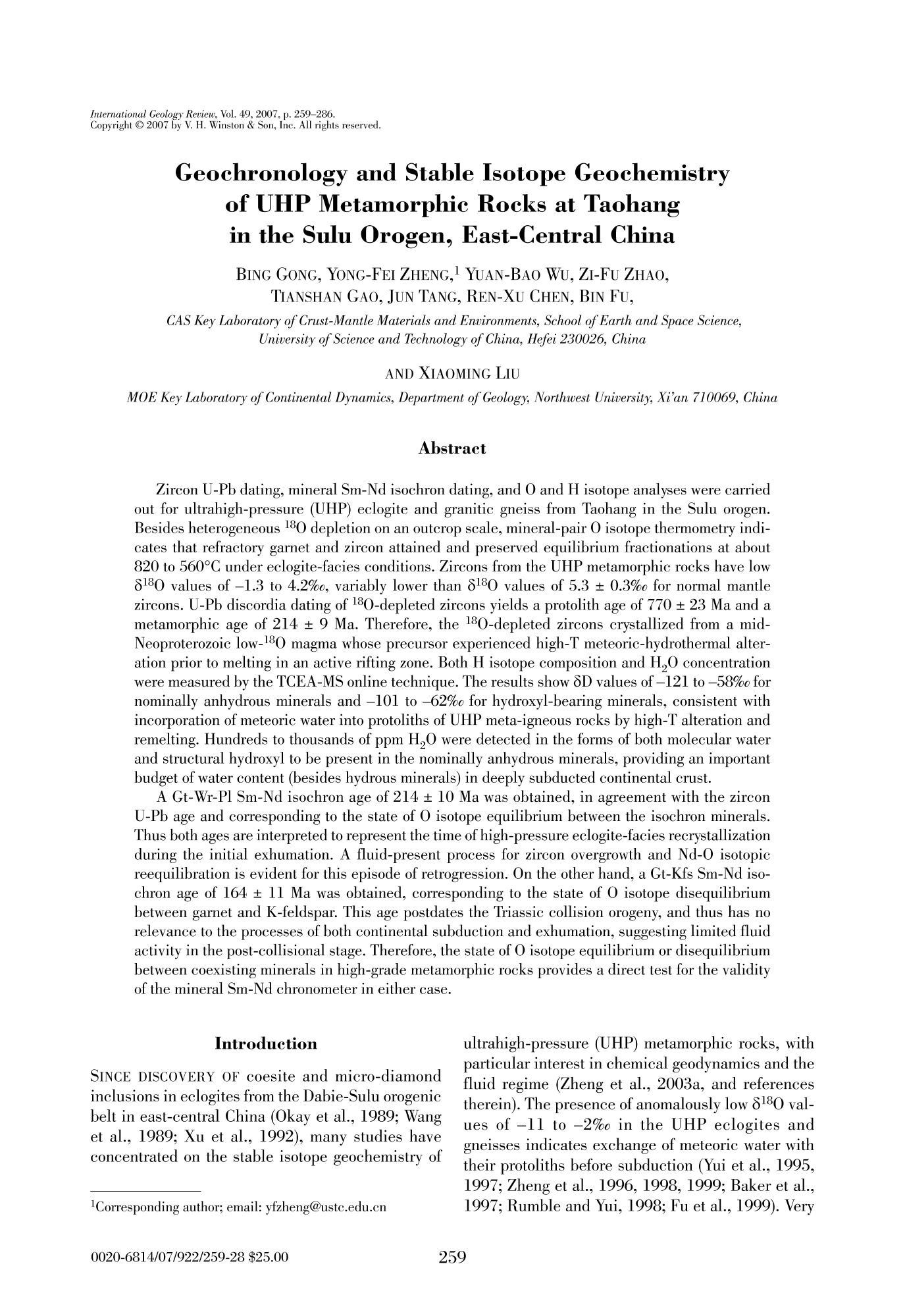
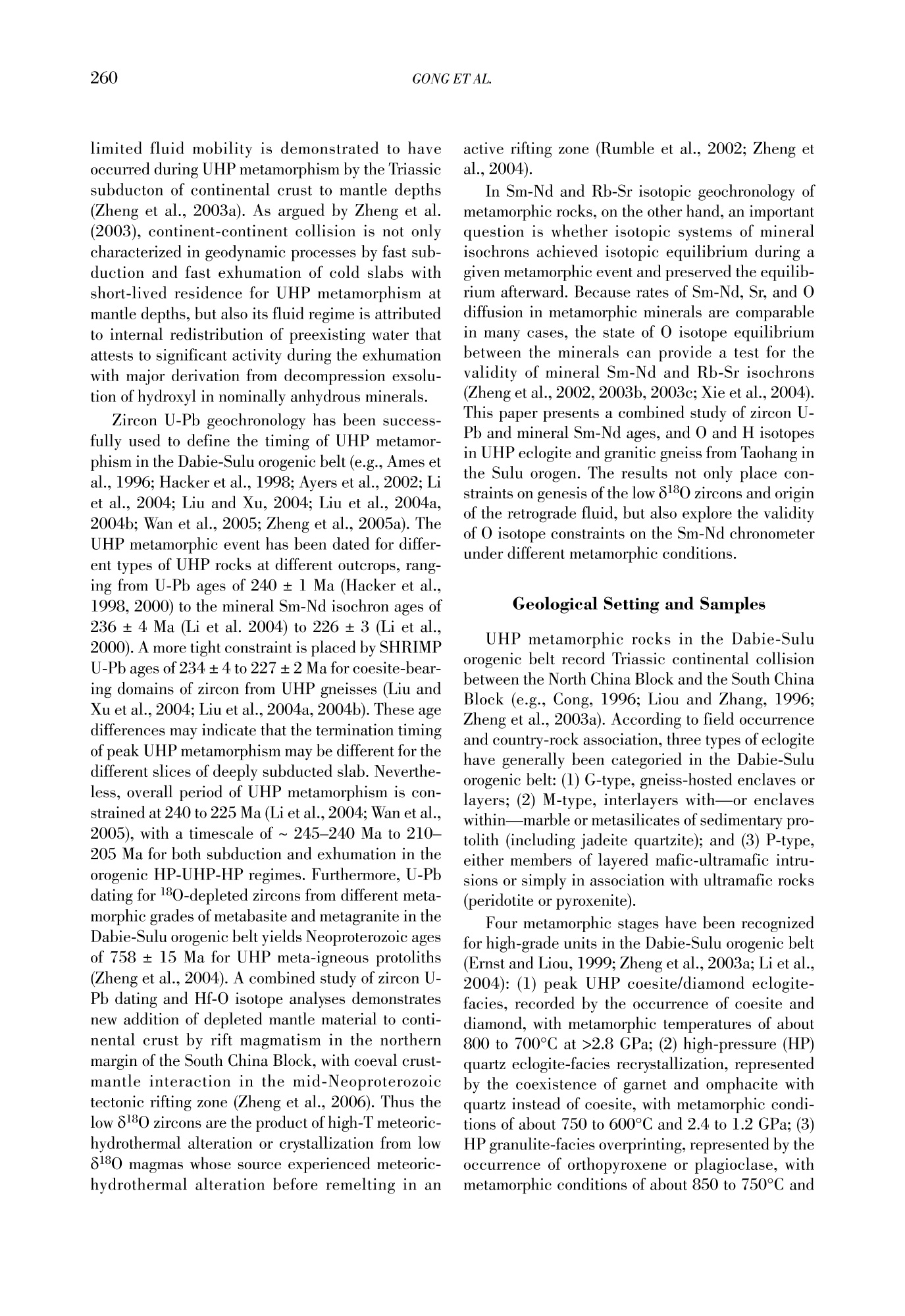
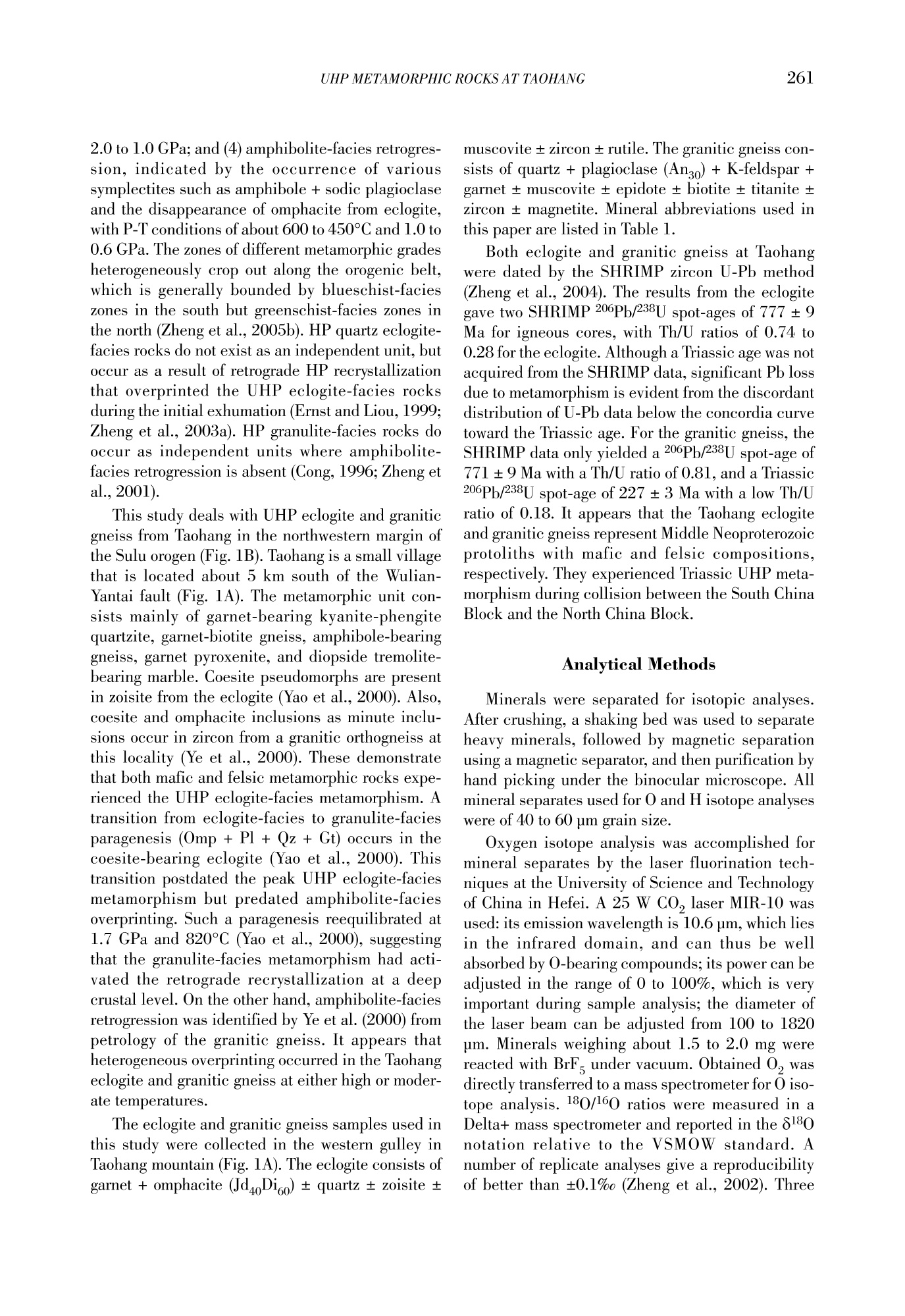
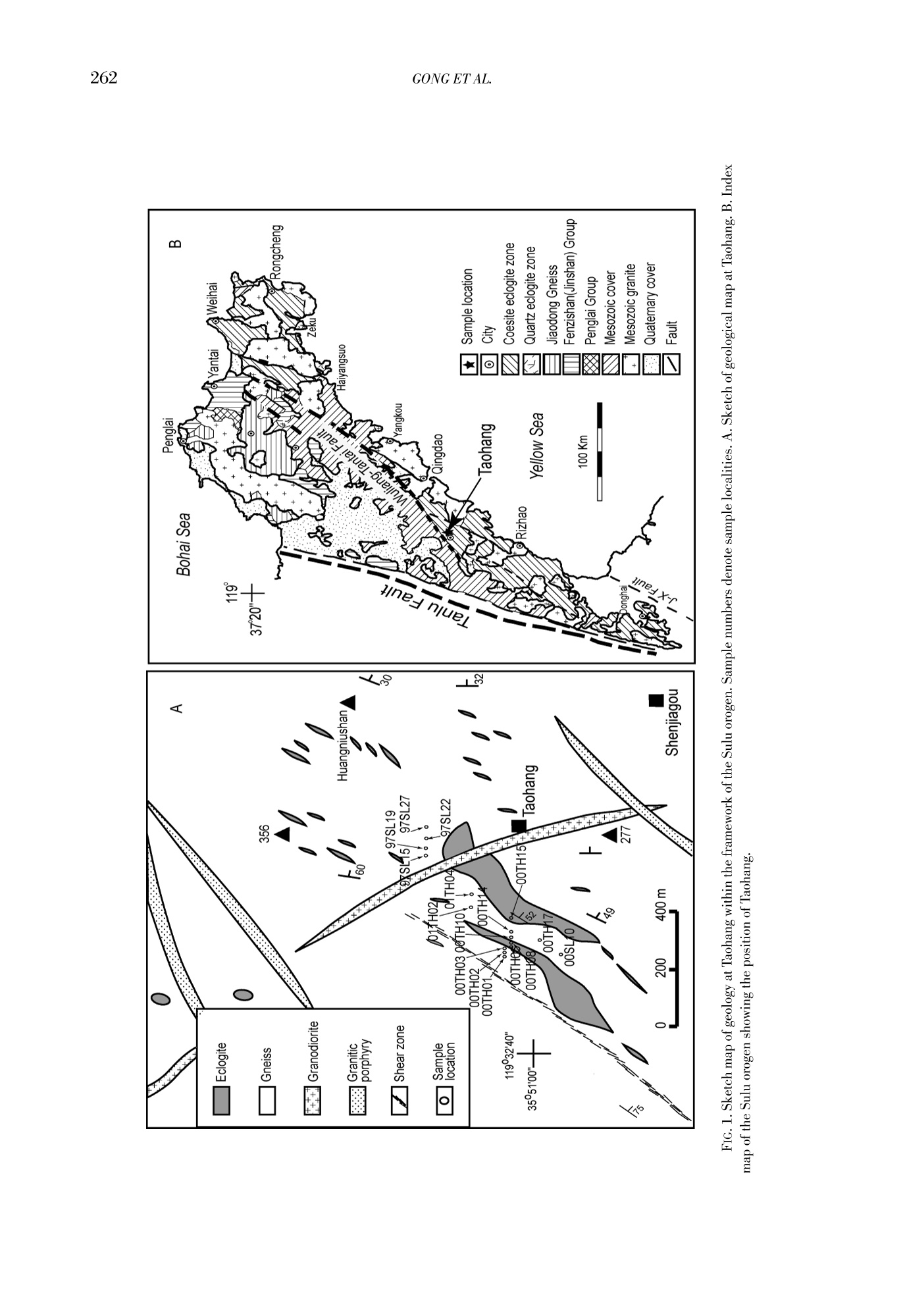
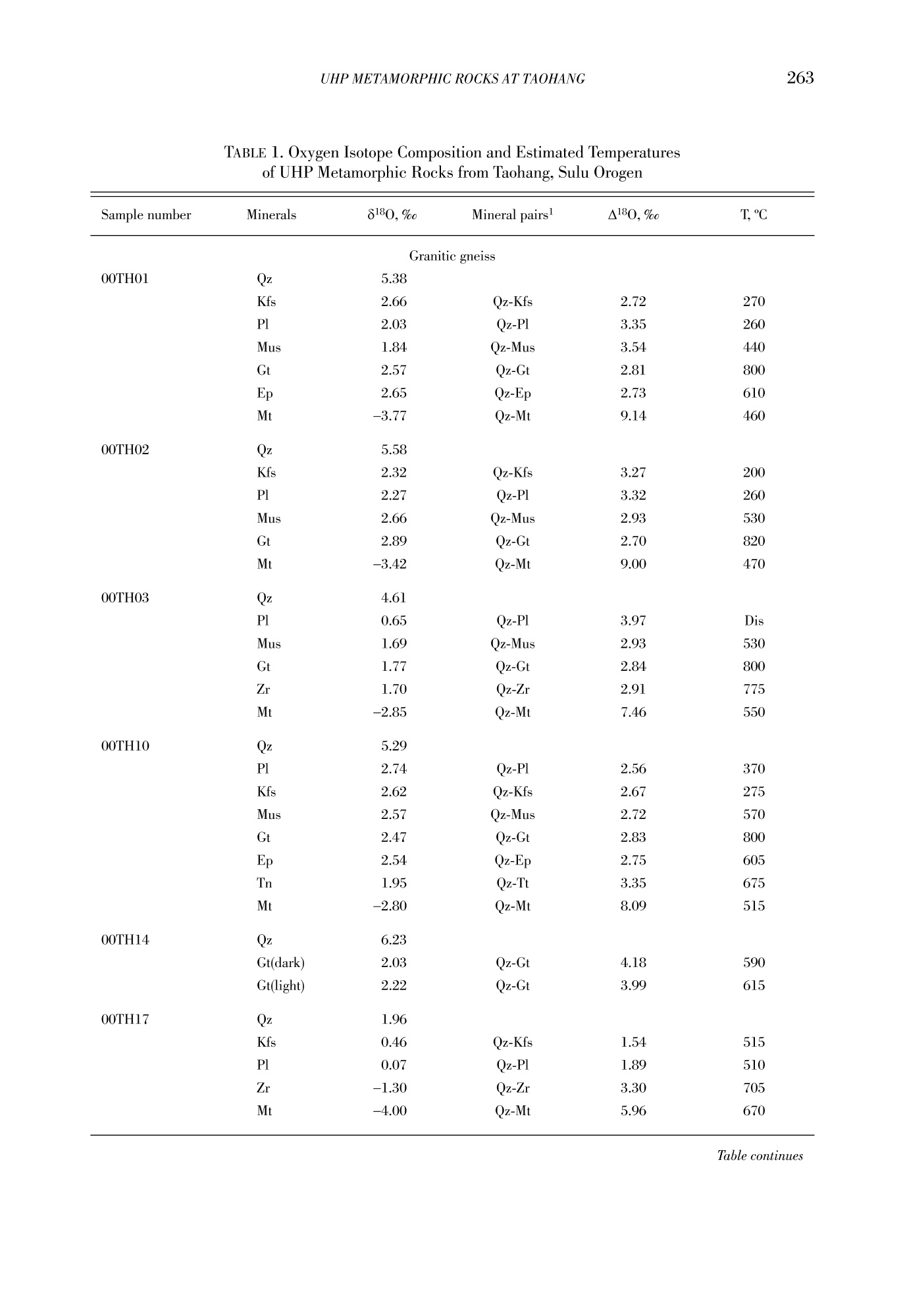
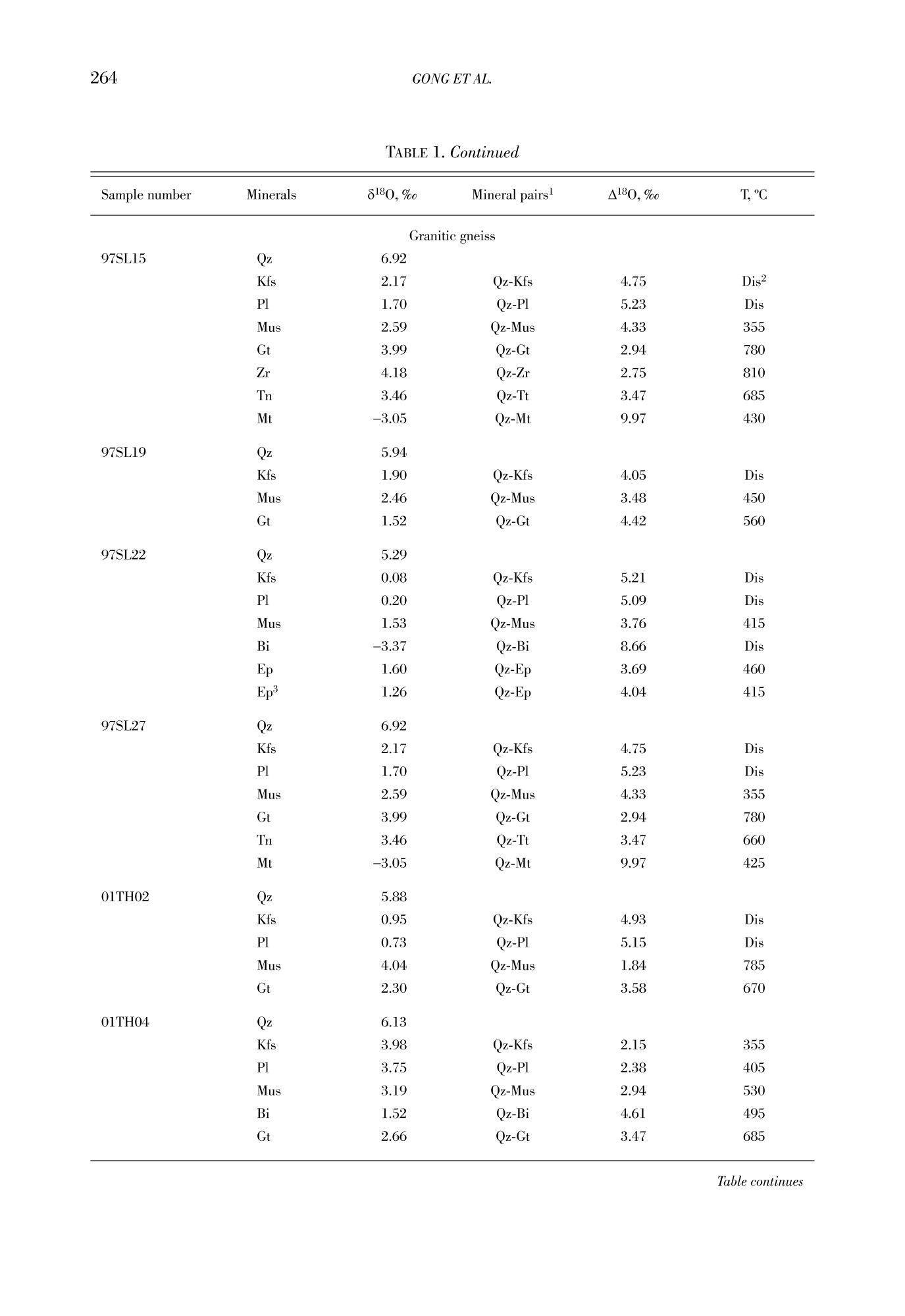
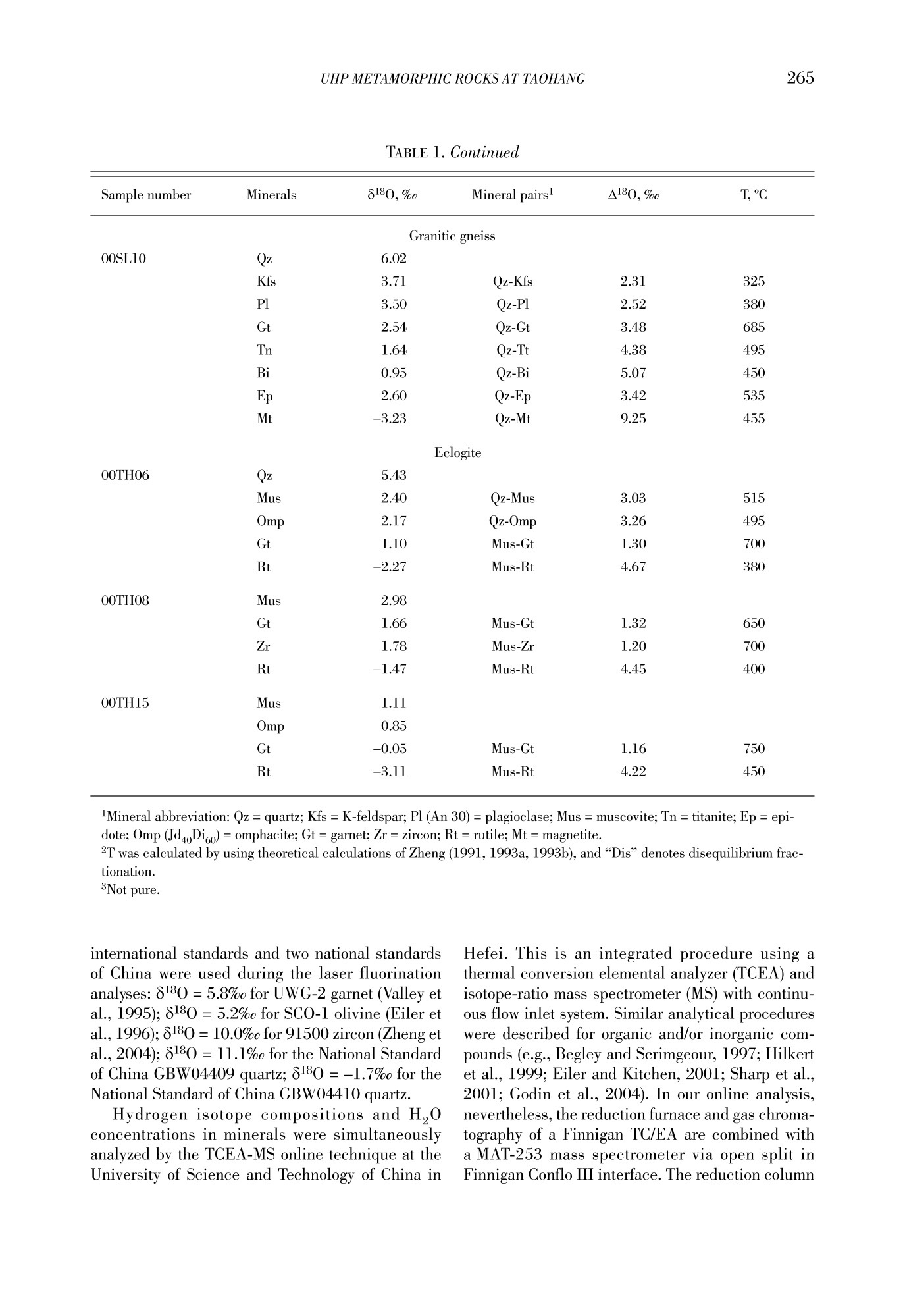
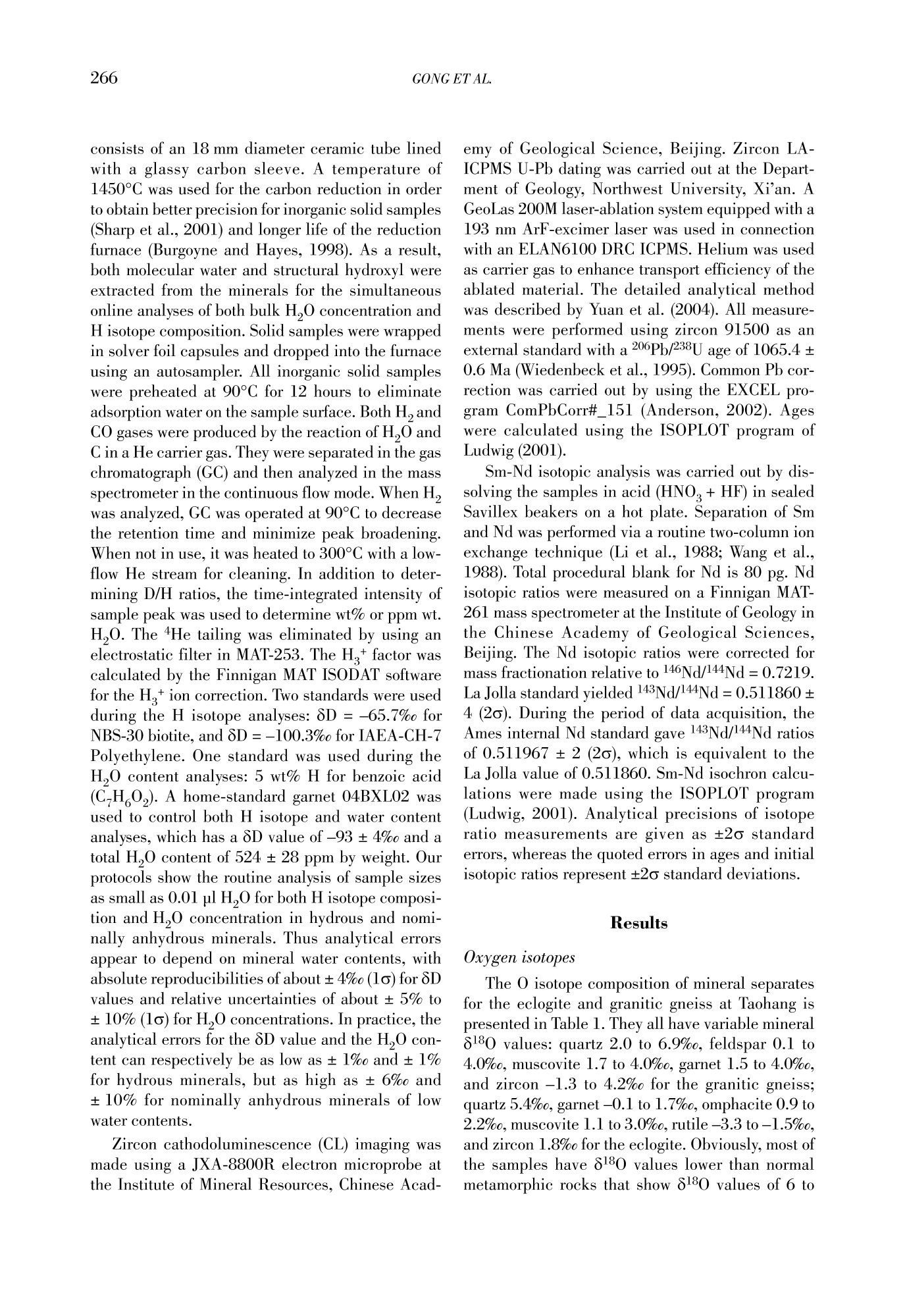
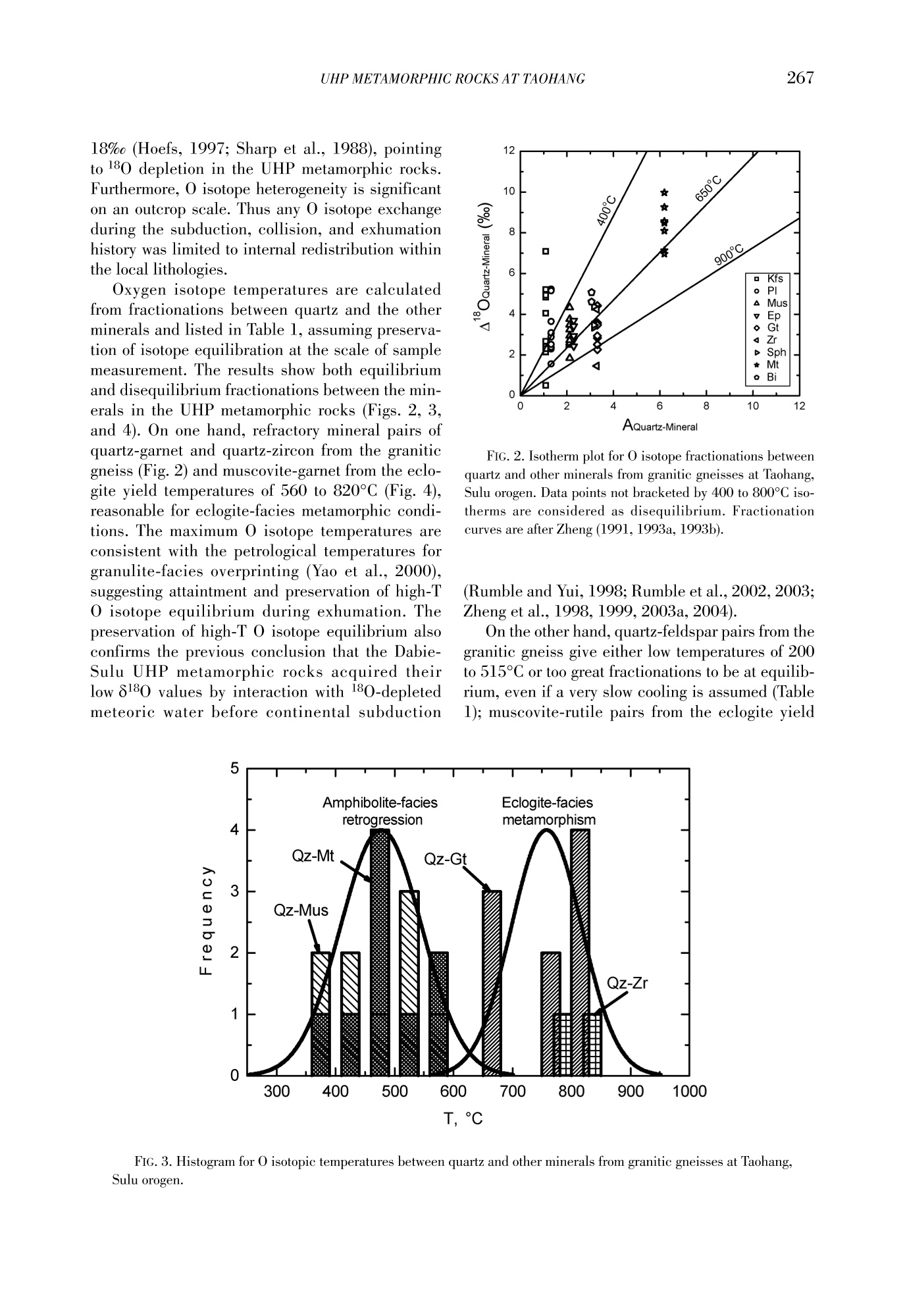
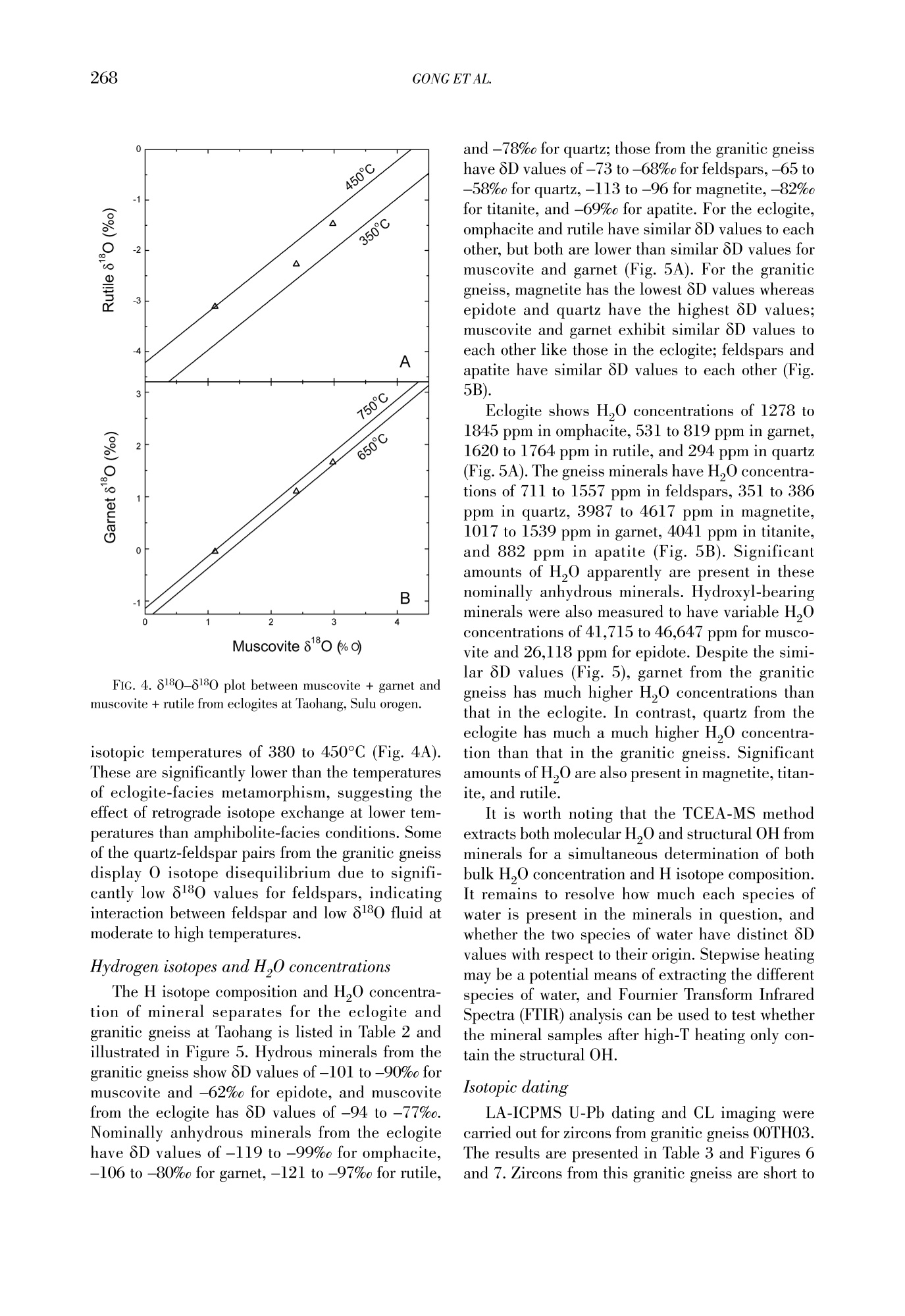
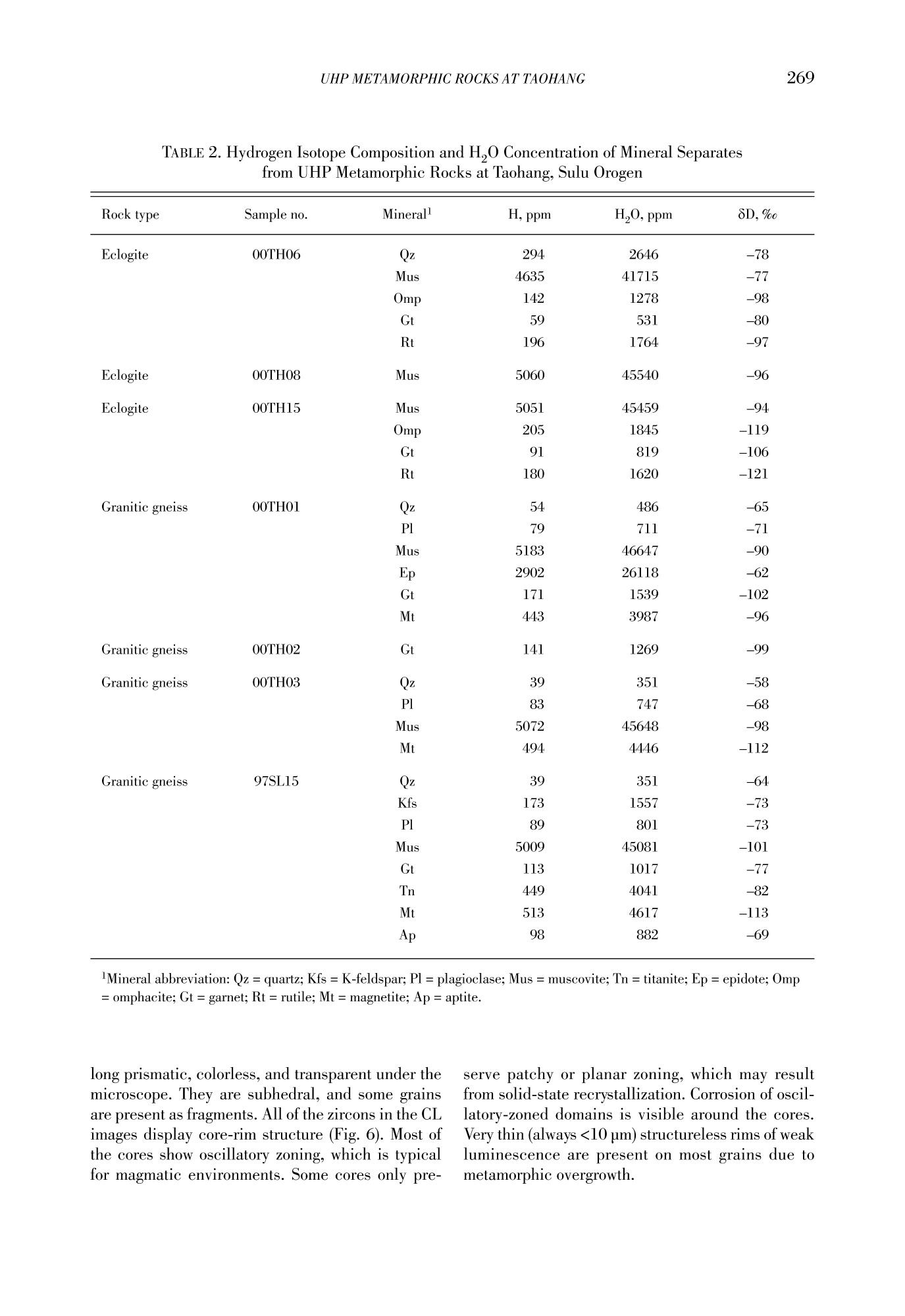
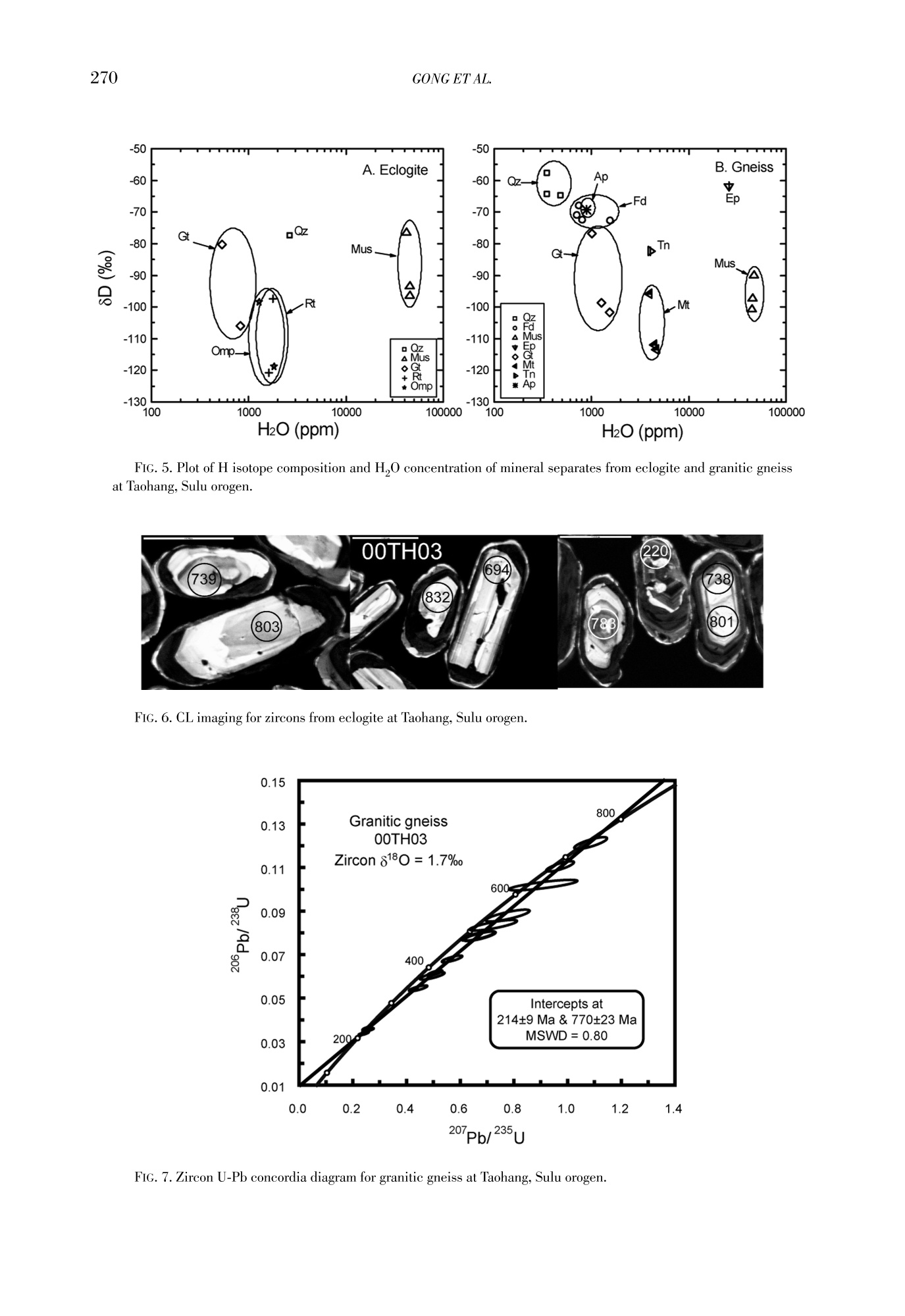
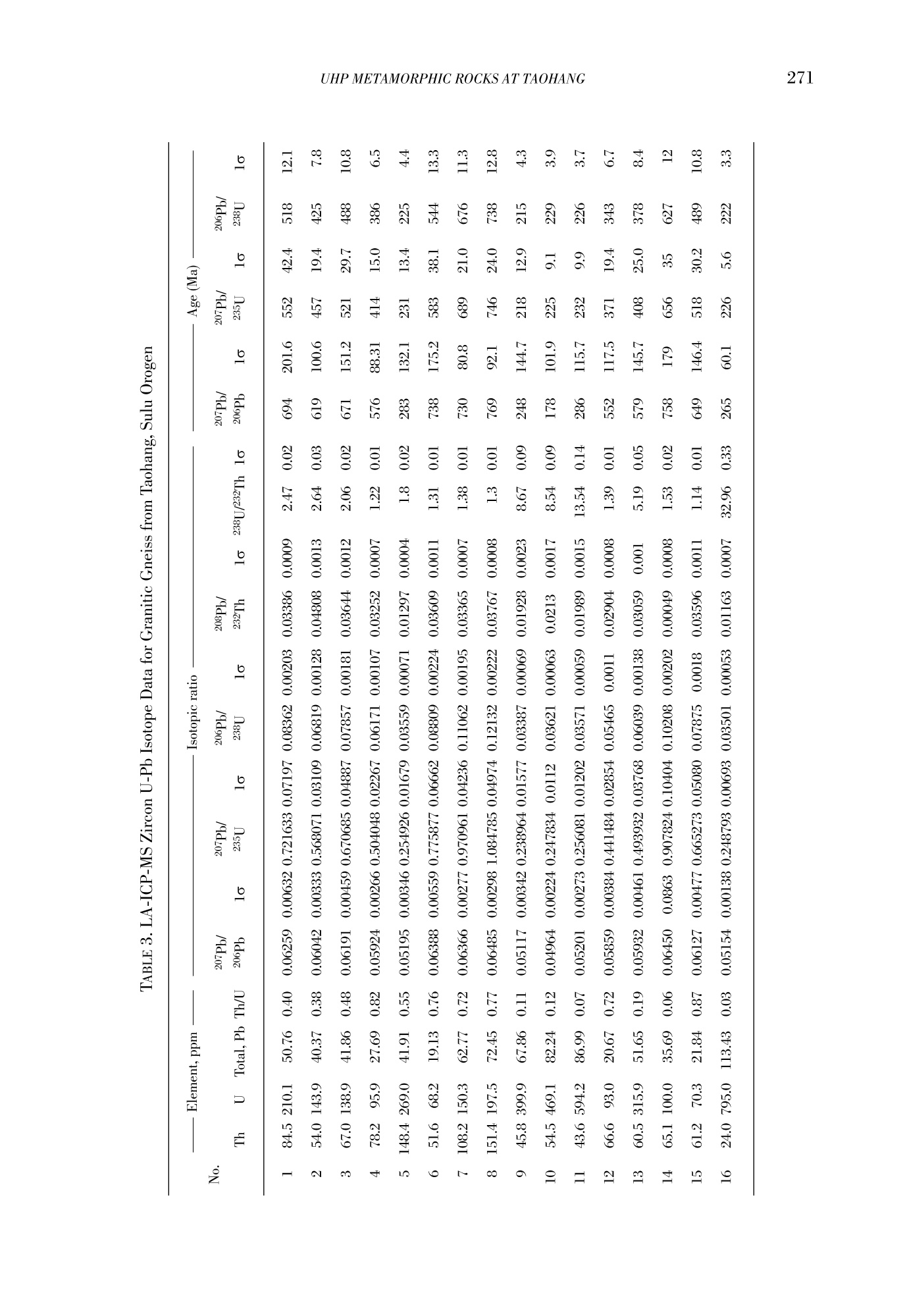
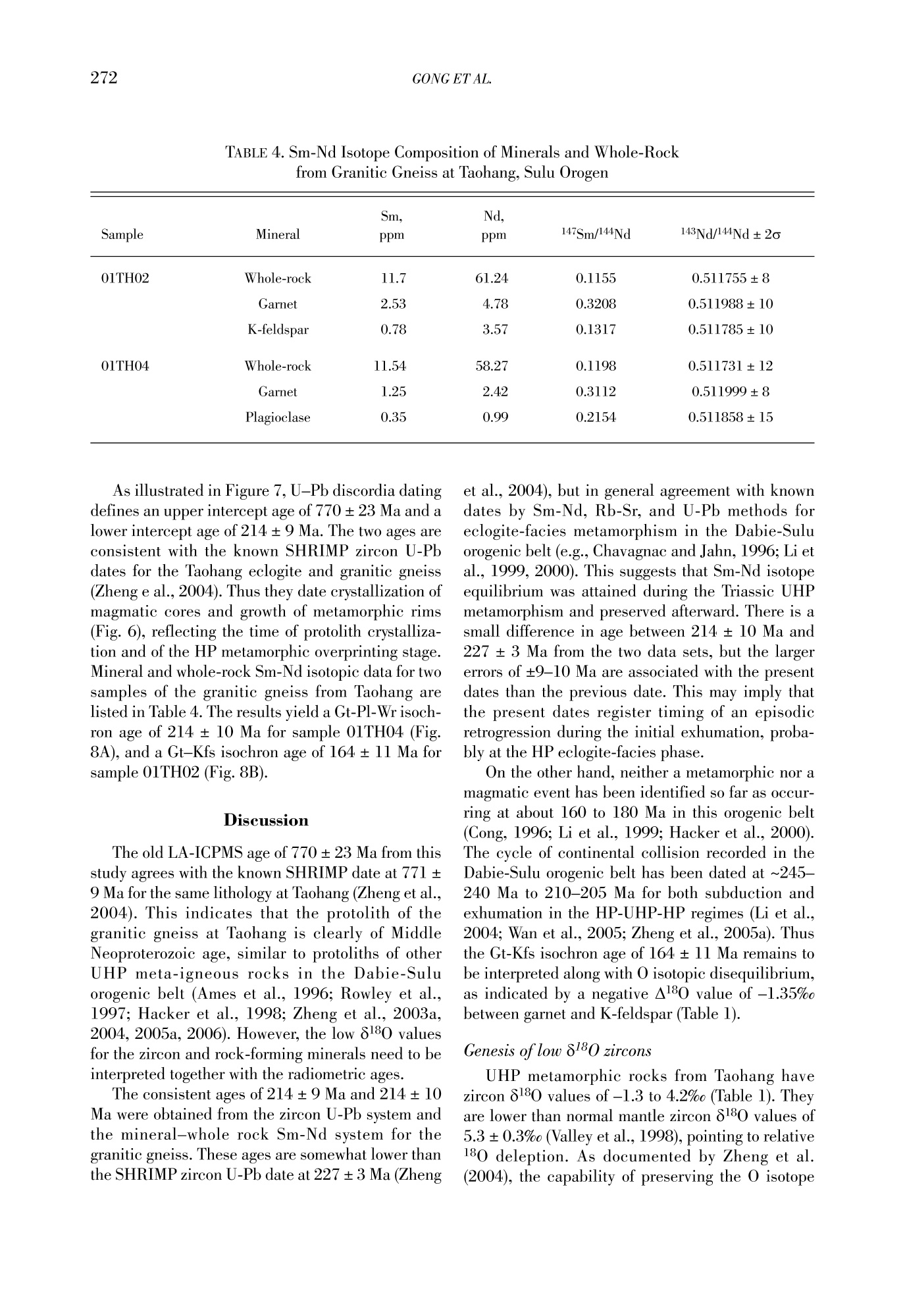
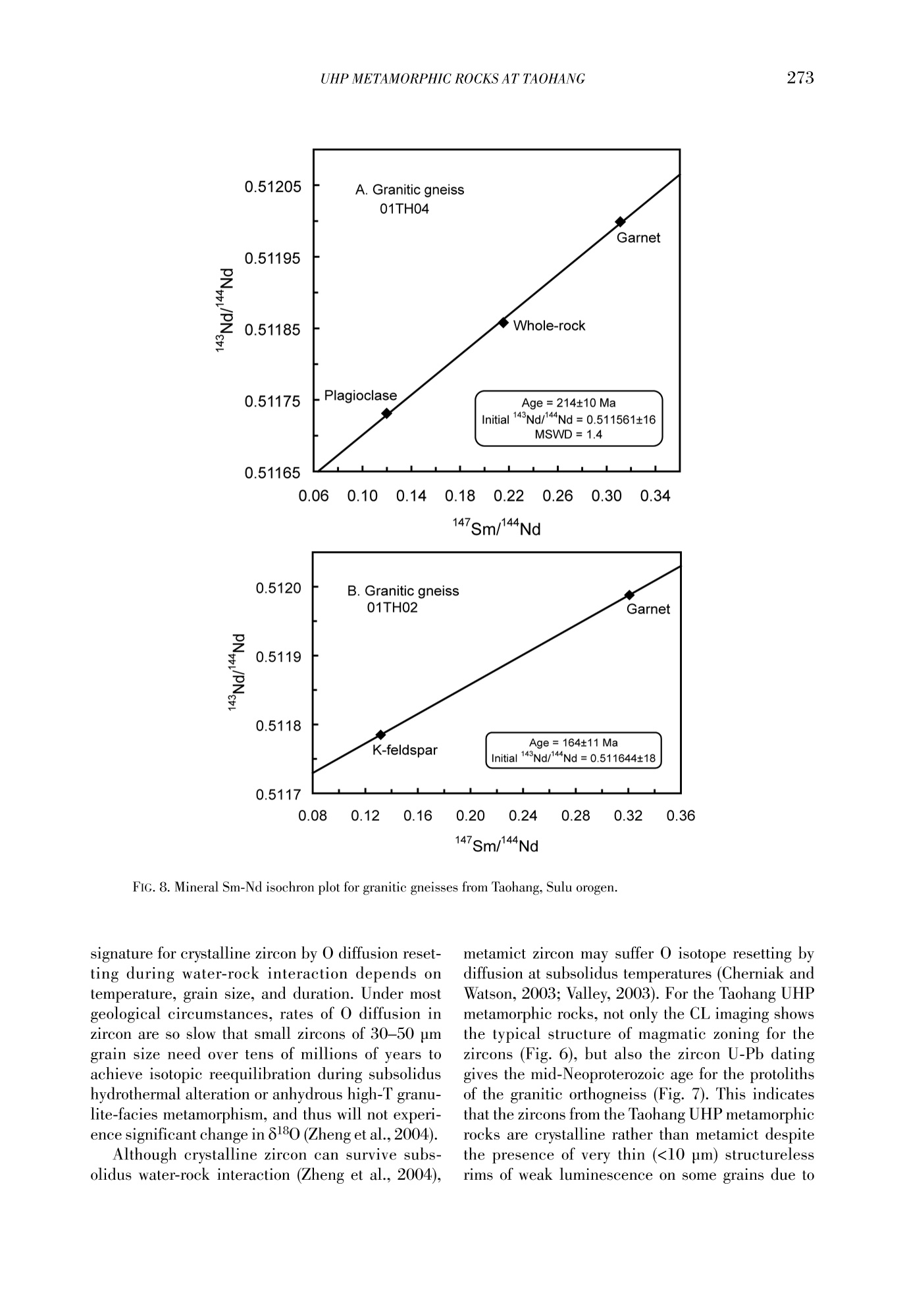
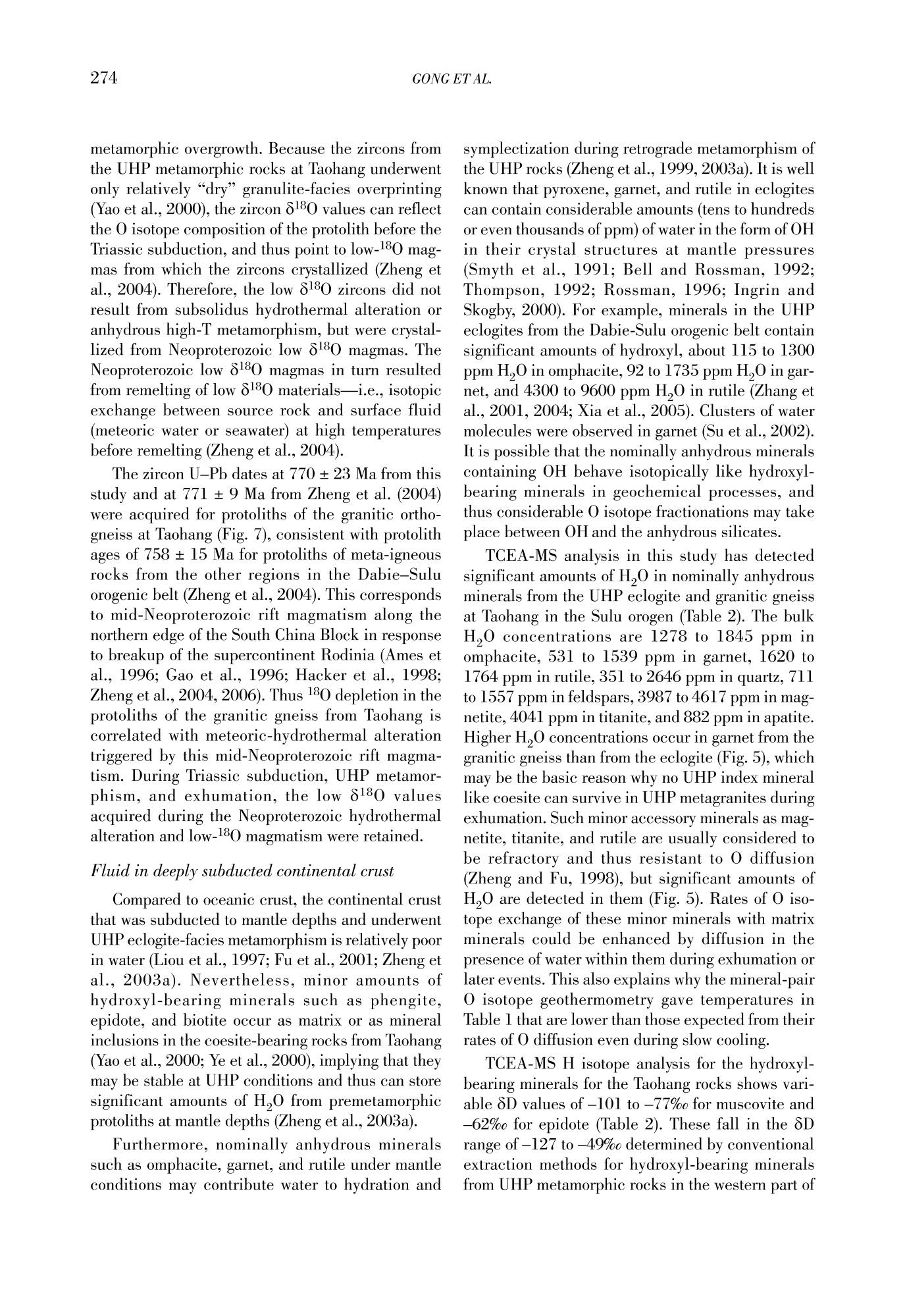
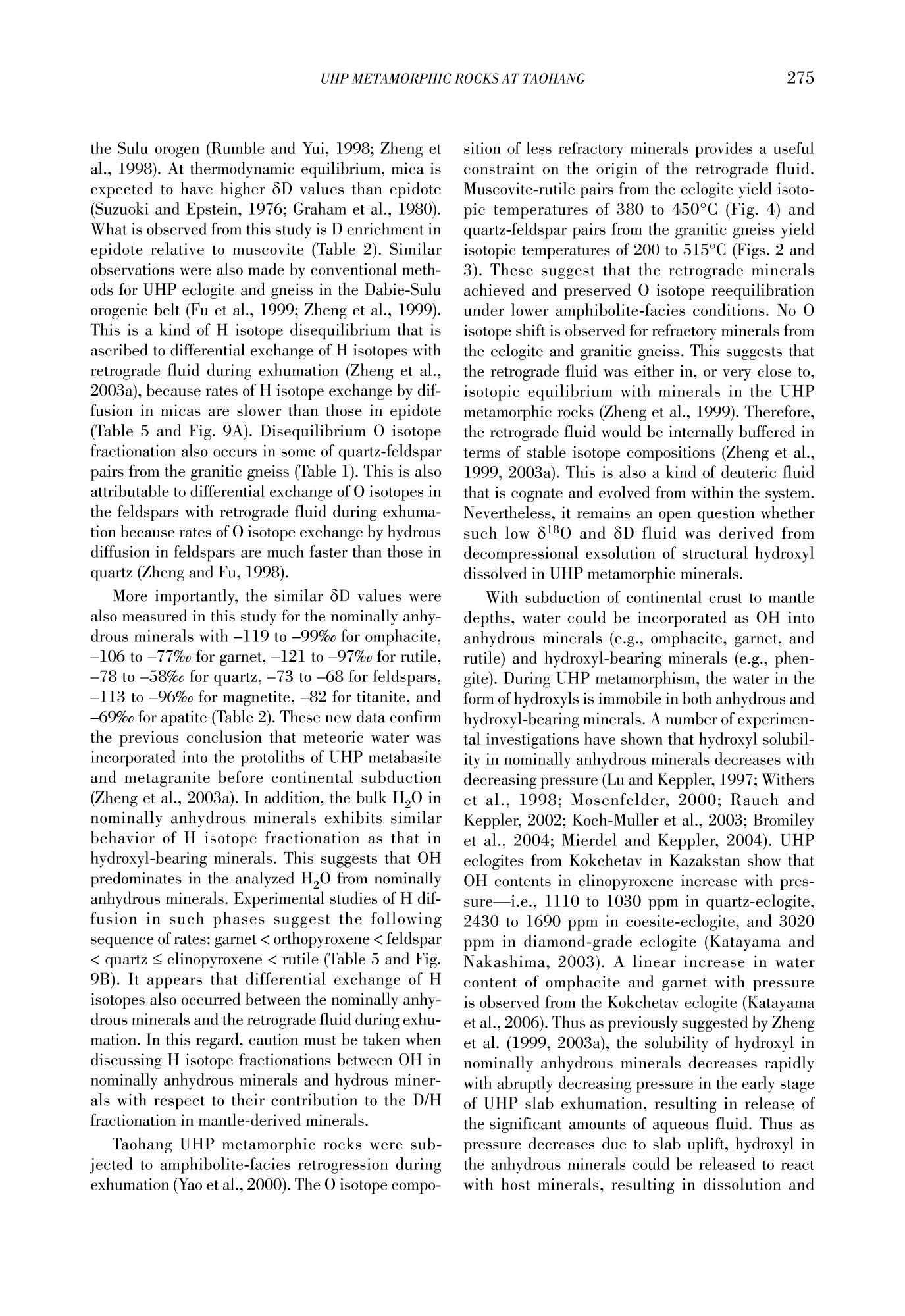
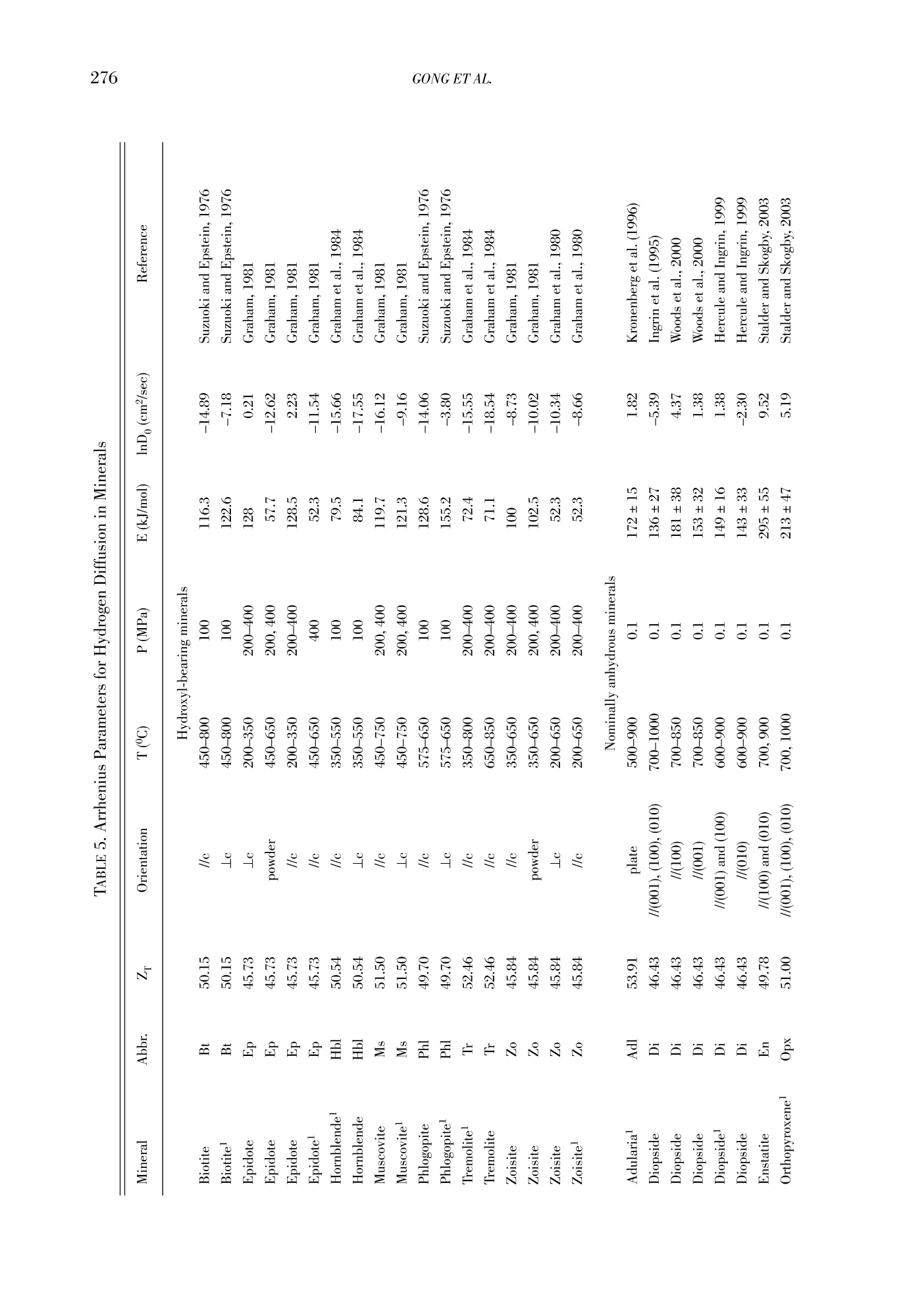
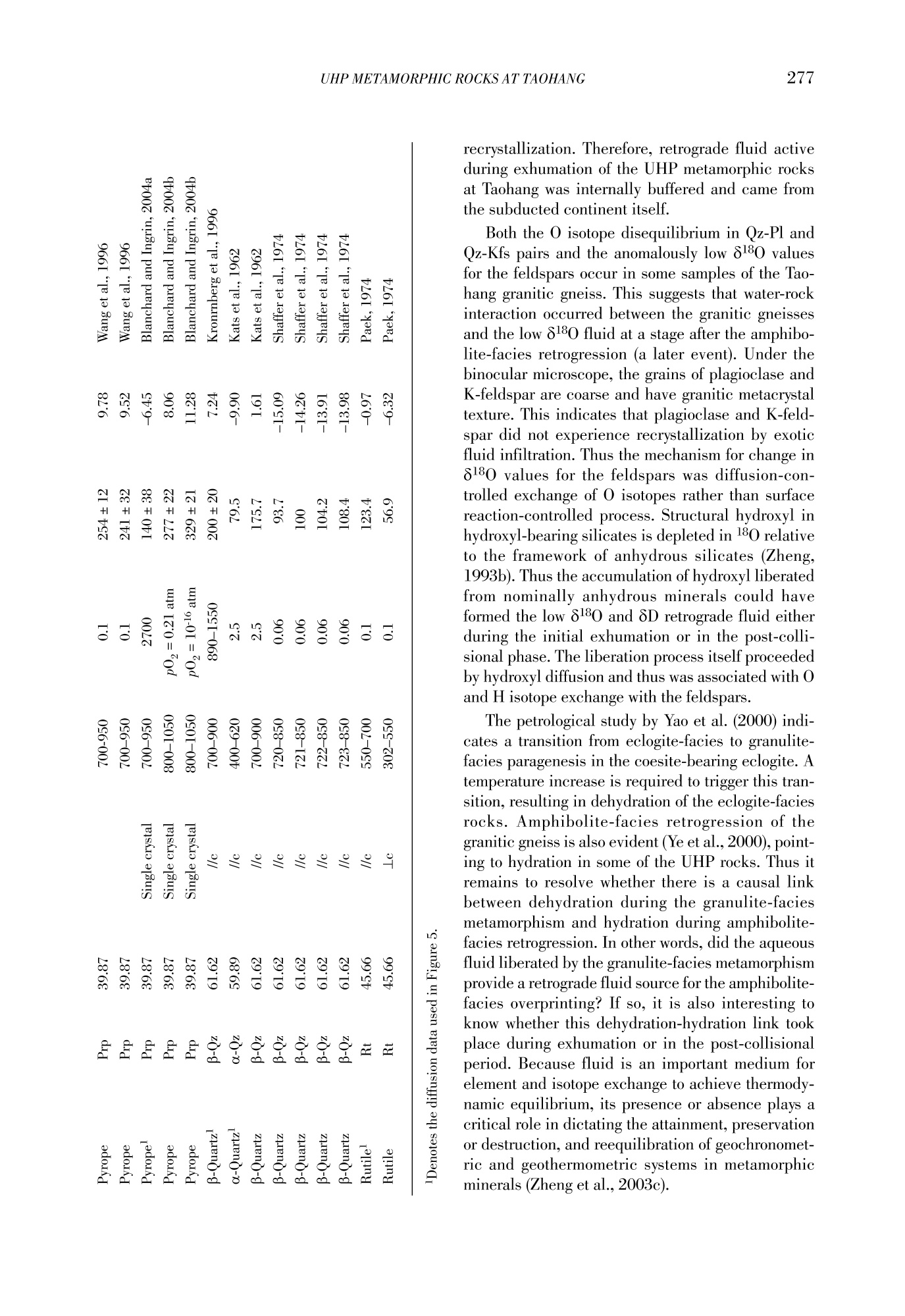
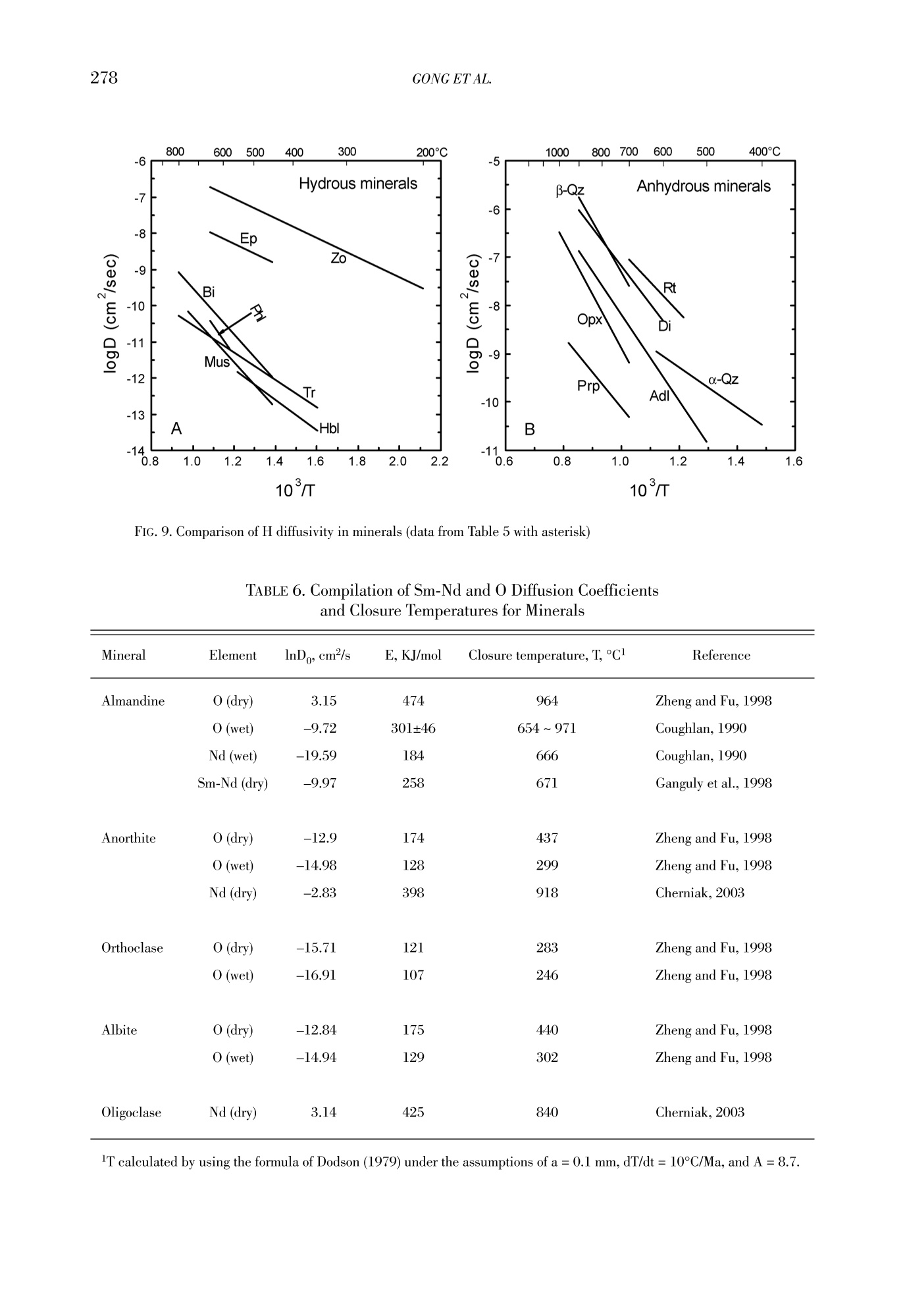
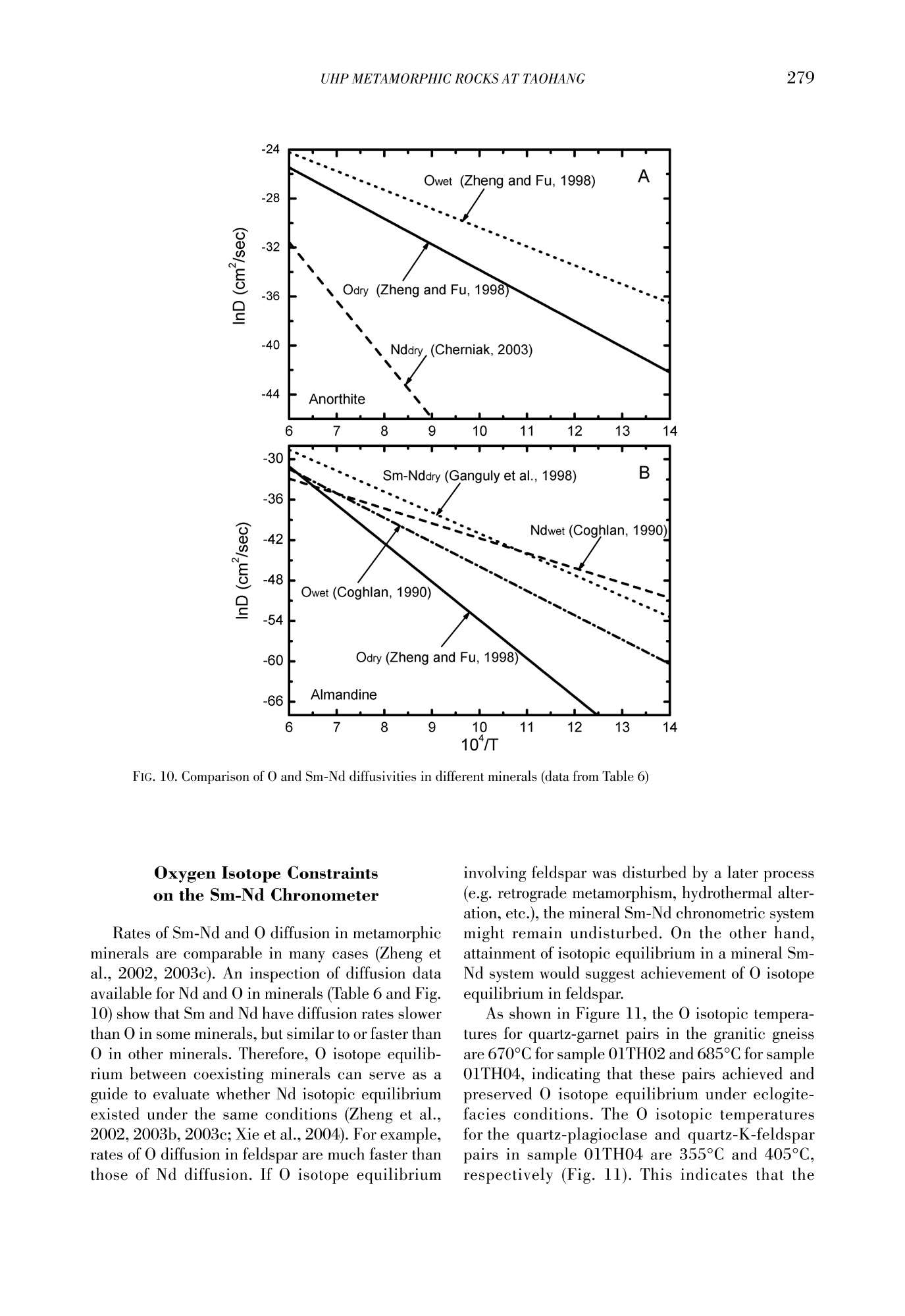
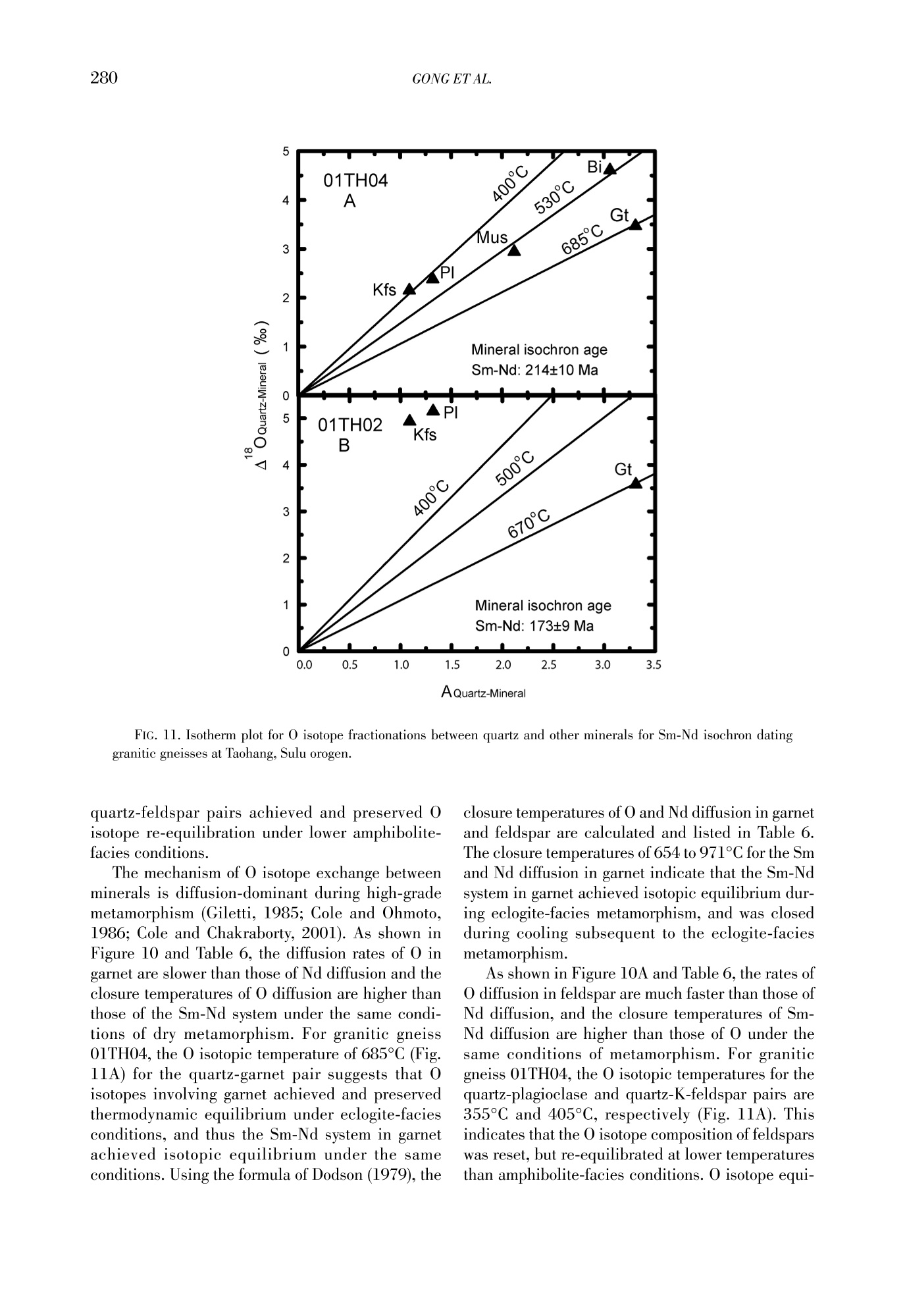
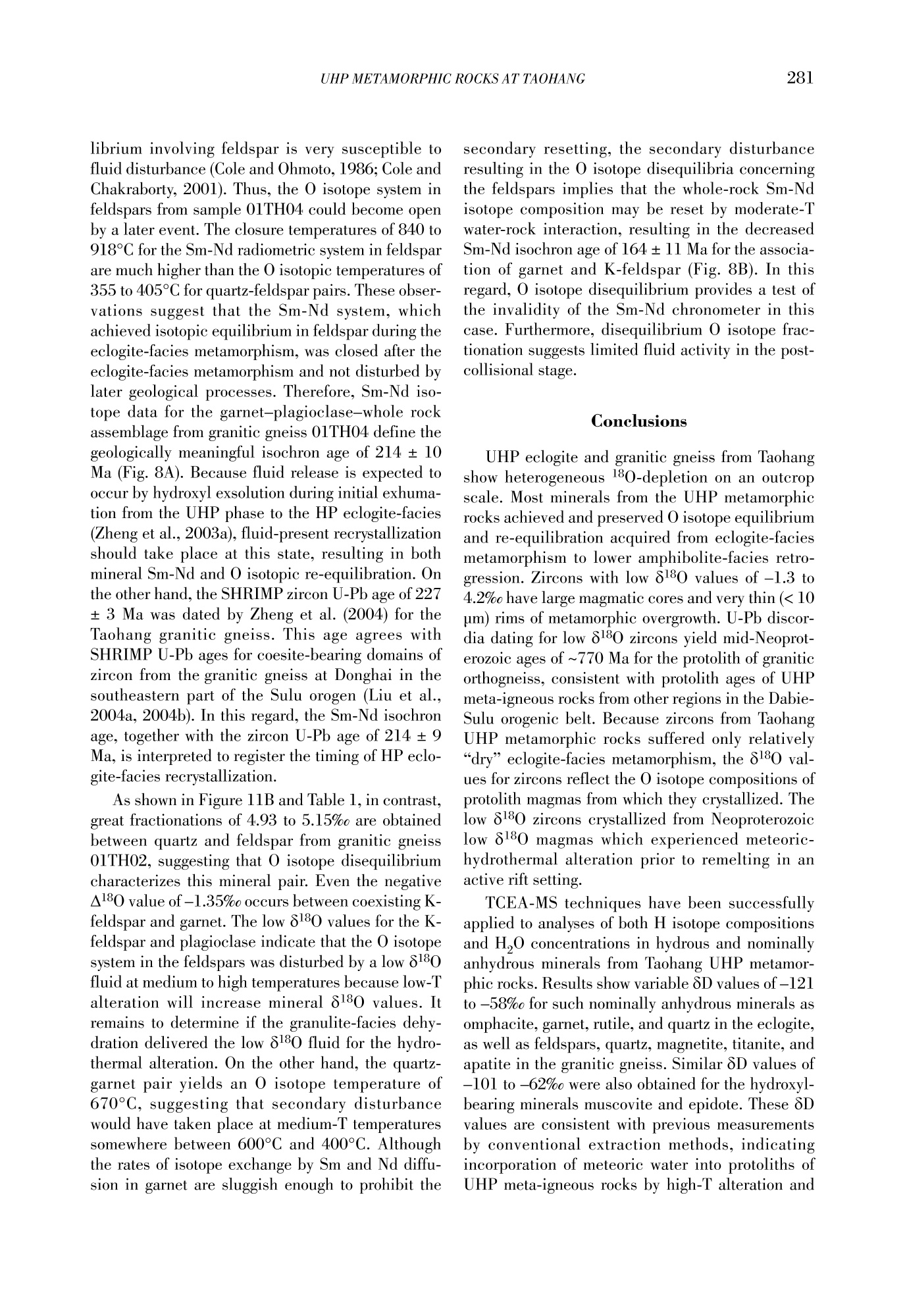
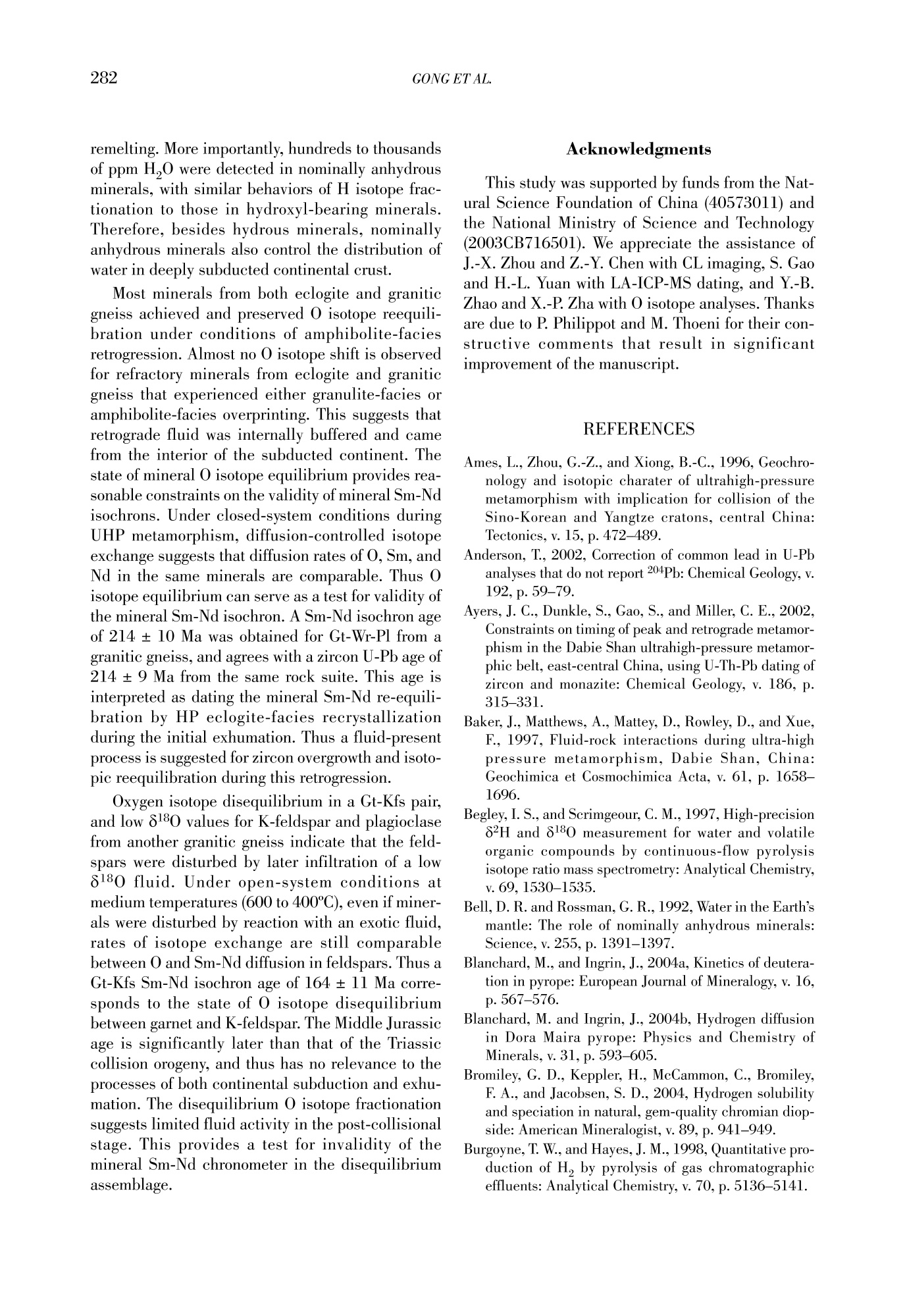

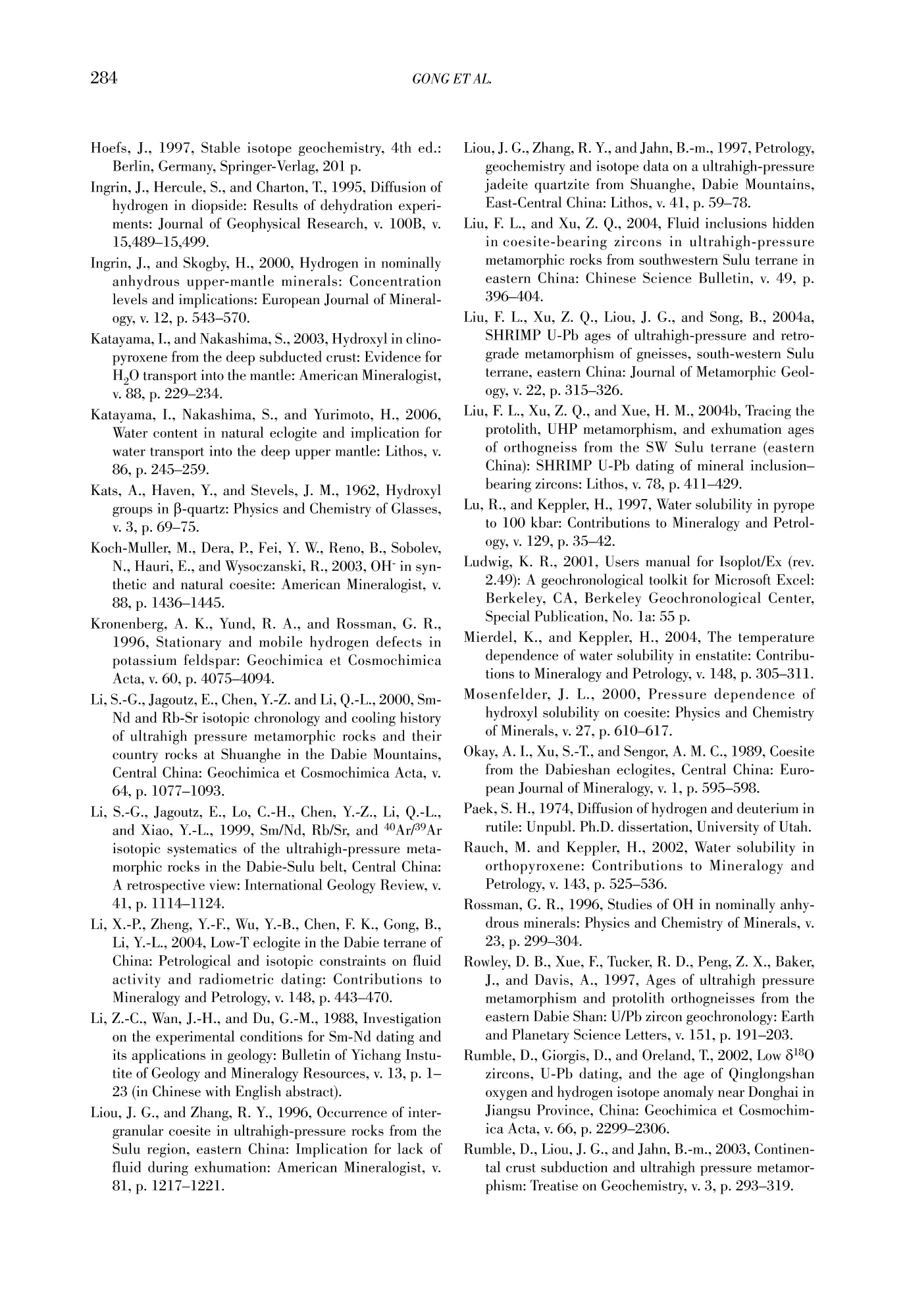

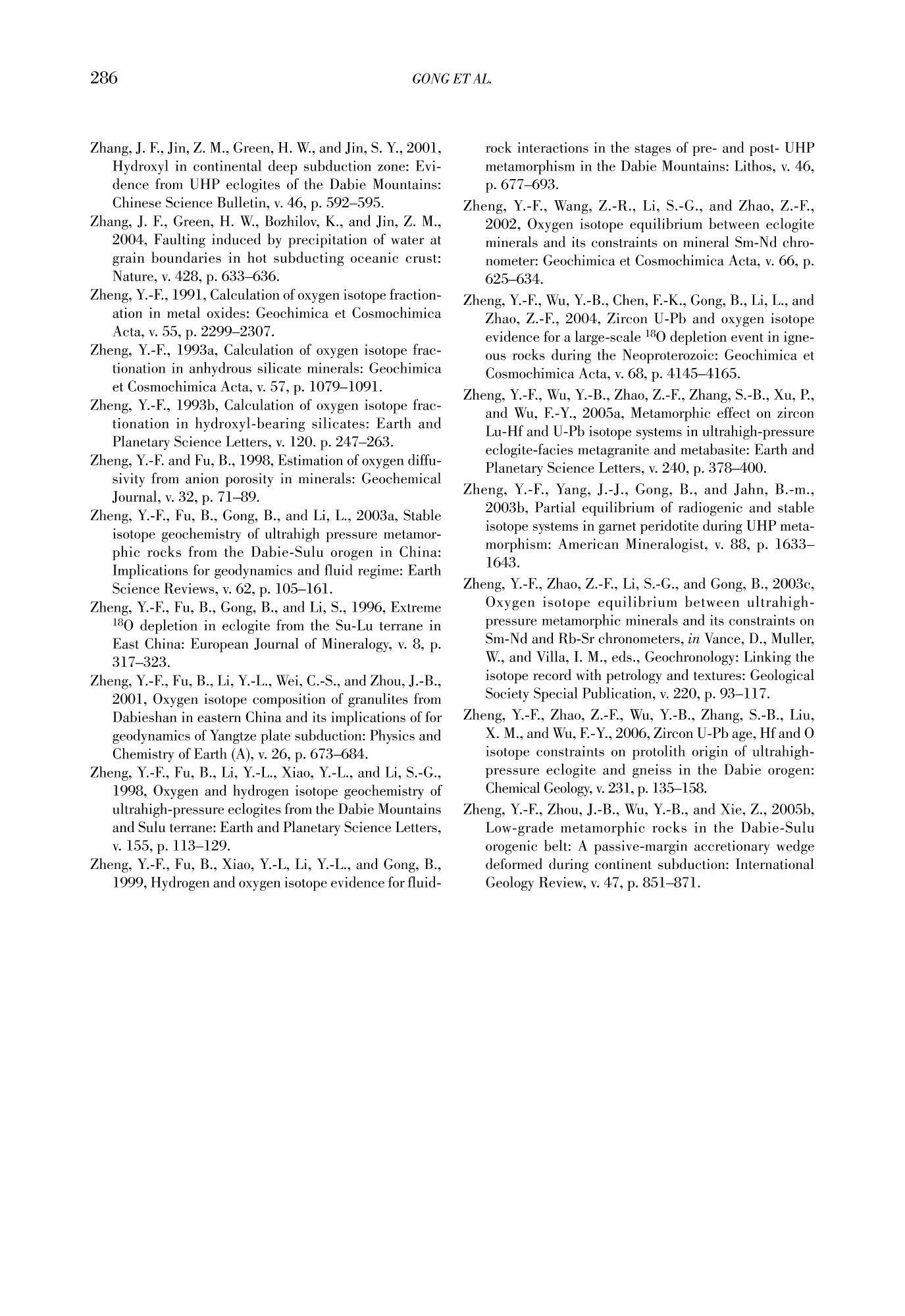
还剩26页未读,是否继续阅读?
上海凯来仪器有限公司为您提供《超高压变质岩中氧同位素检测方案(激光剥蚀进样)》,该方案主要用于其他中氧同位素检测,参考标准--,《超高压变质岩中氧同位素检测方案(激光剥蚀进样)》用到的仪器有MIR 102 激光熔融加热系统
推荐专场
相关方案
更多
该厂商其他方案
更多











